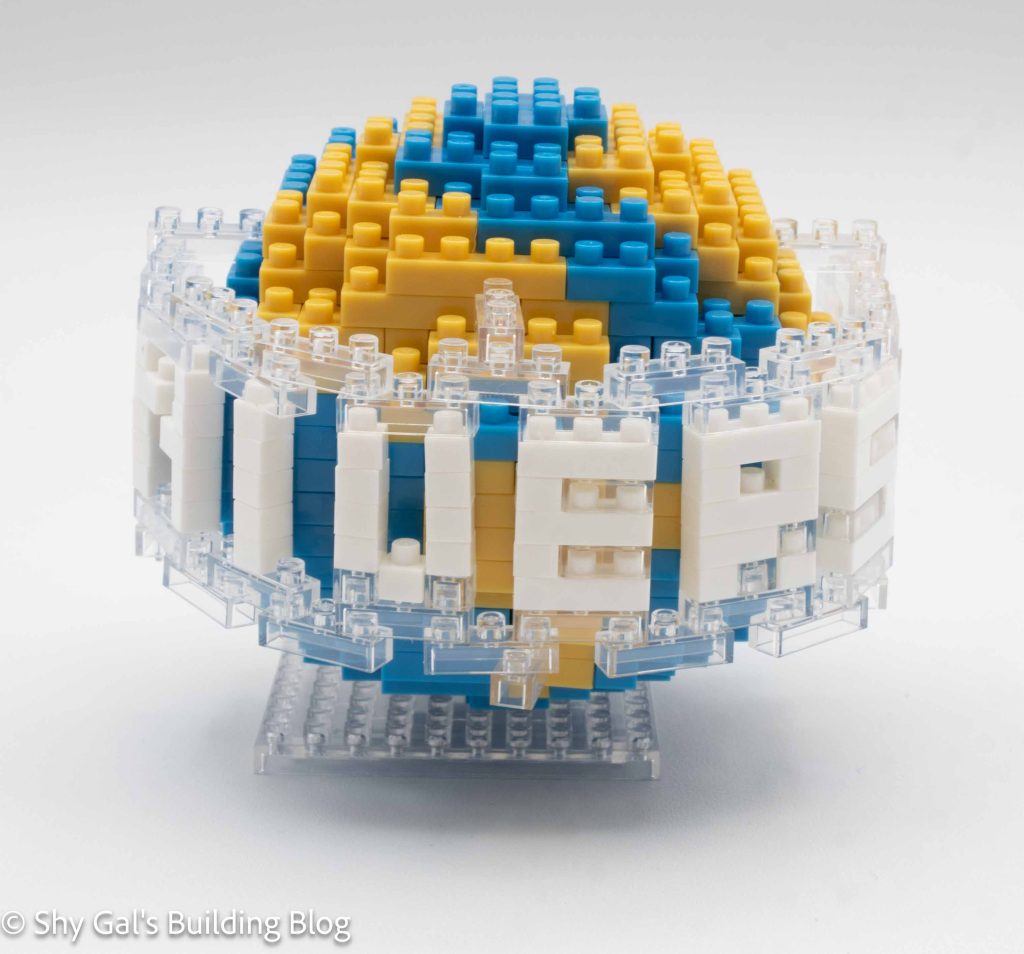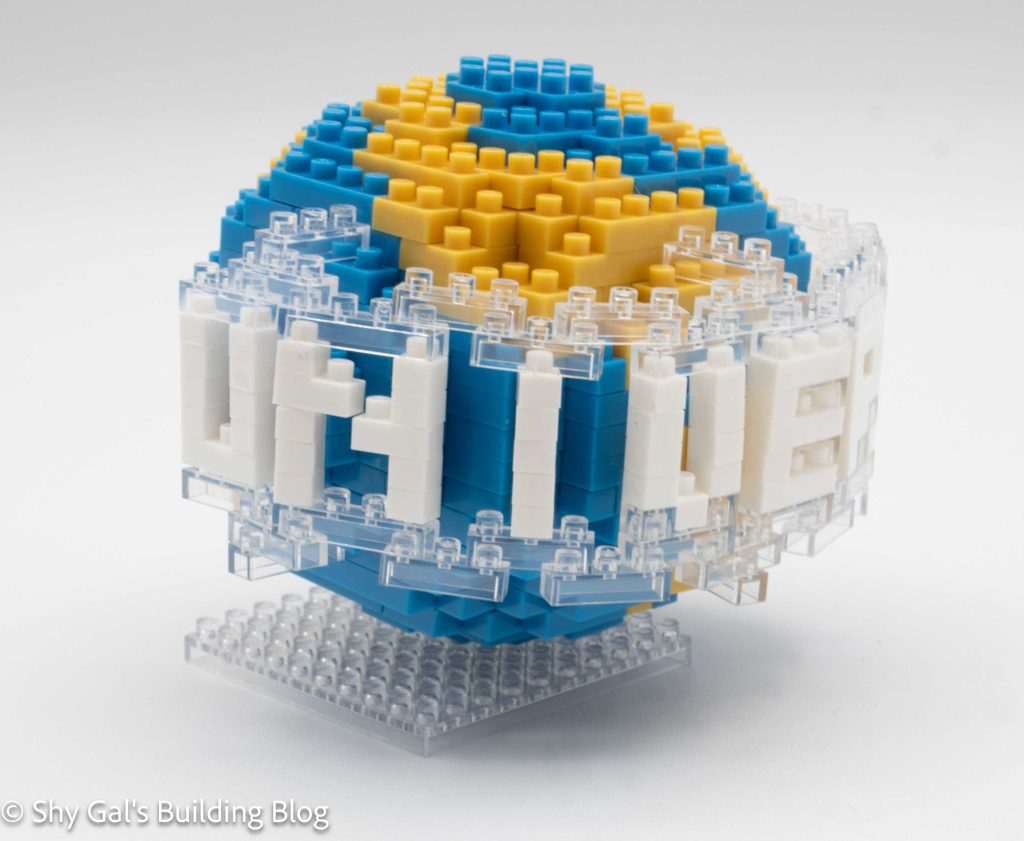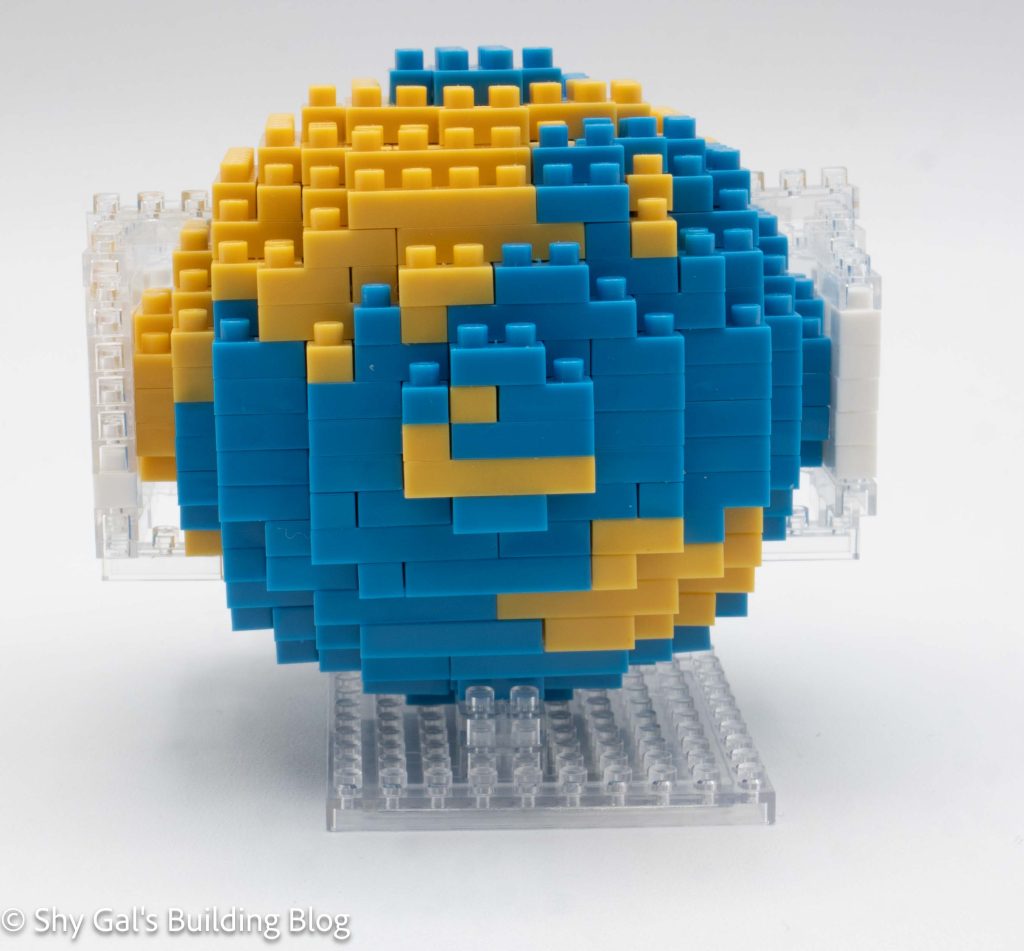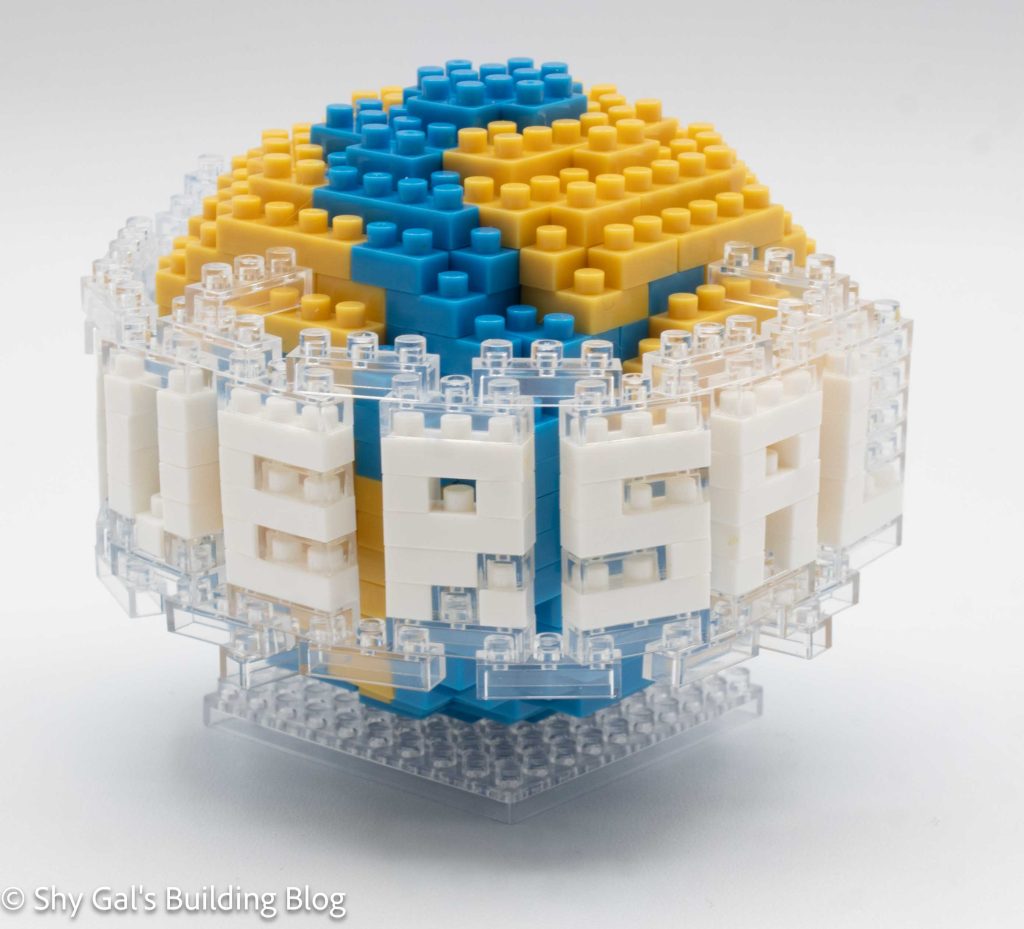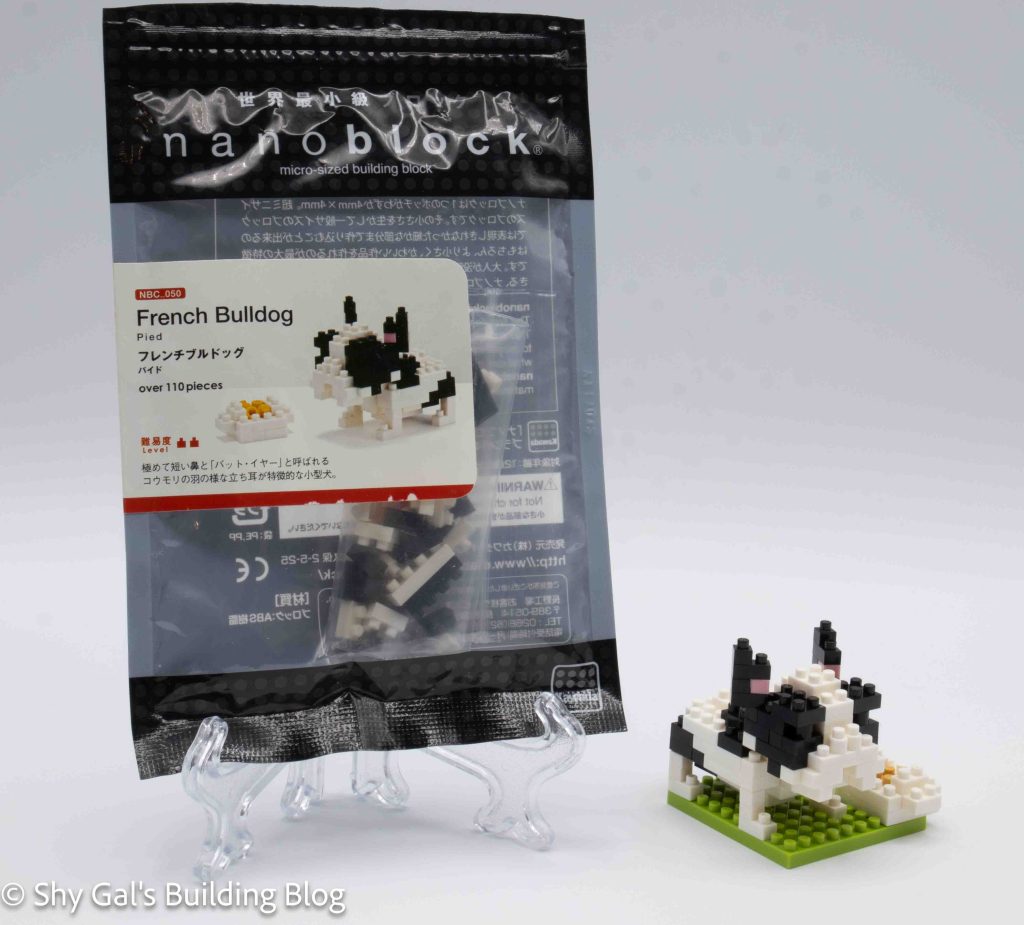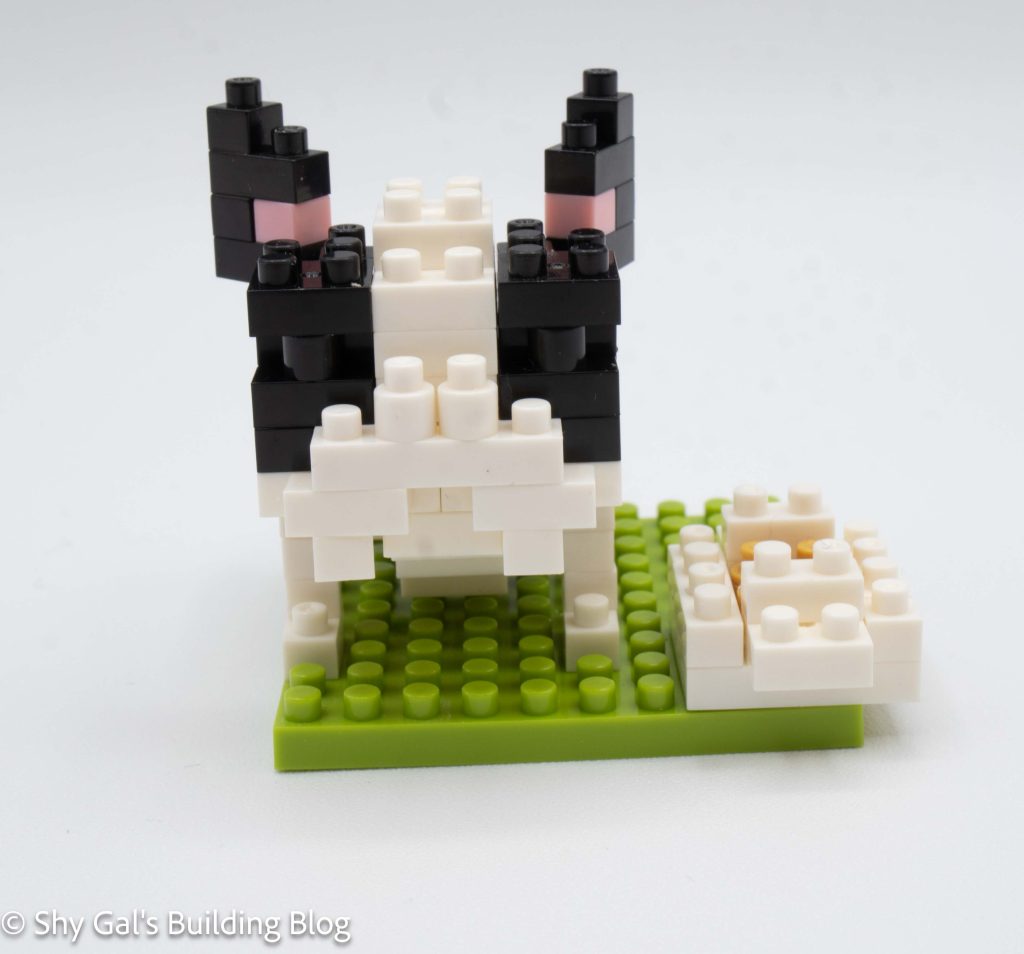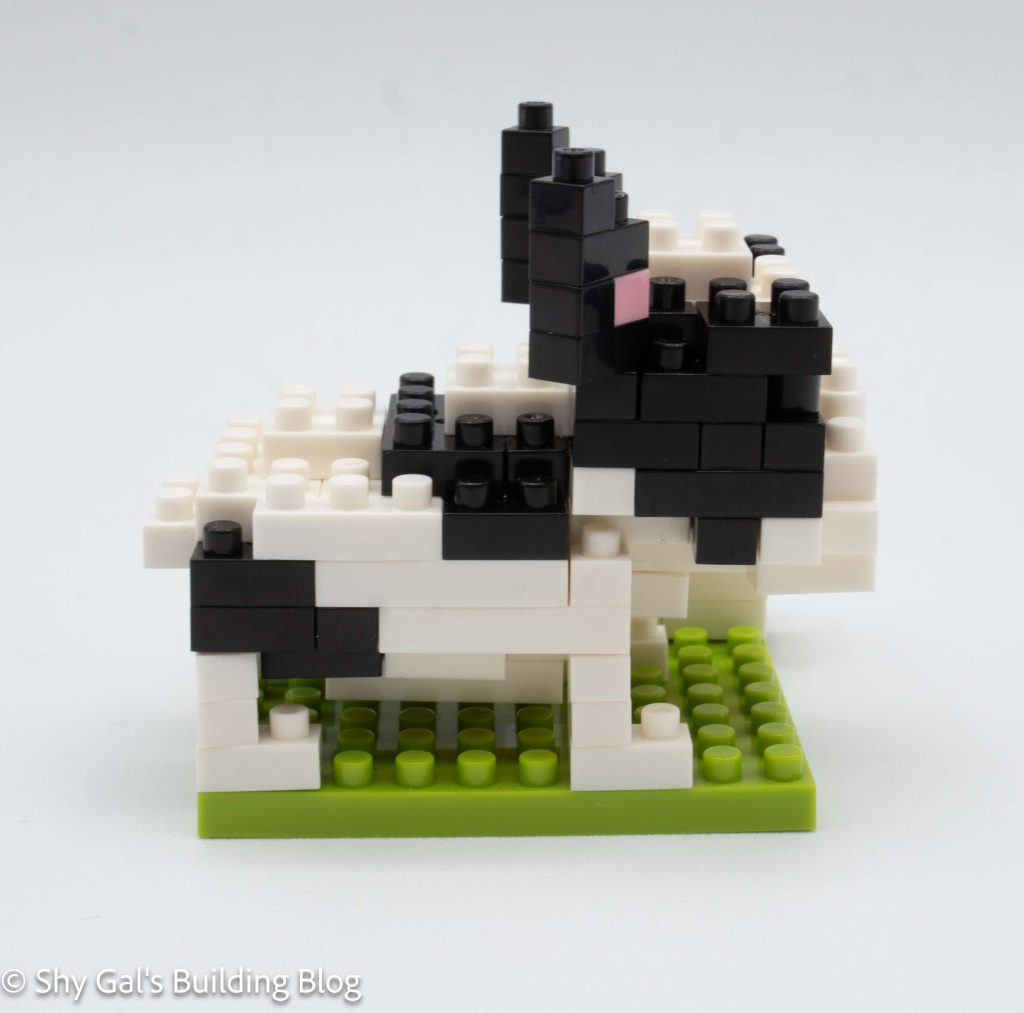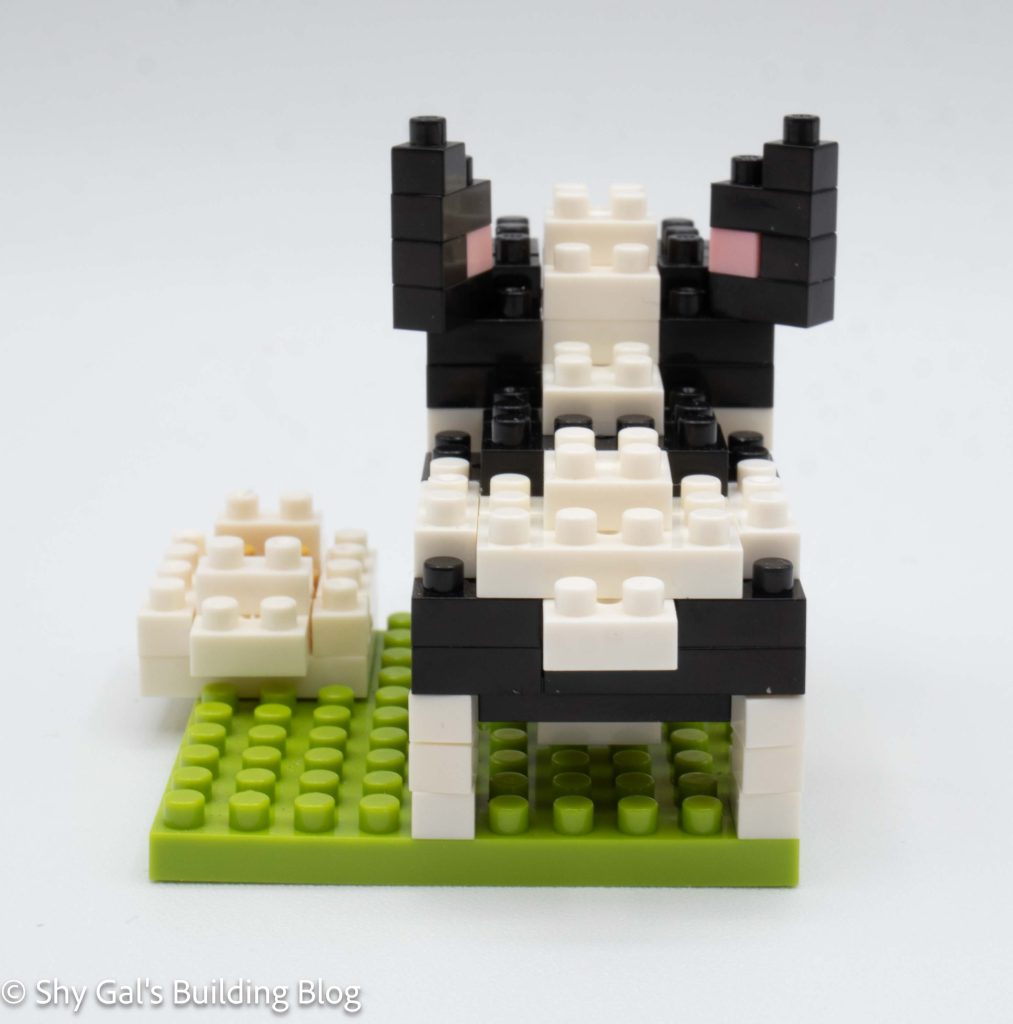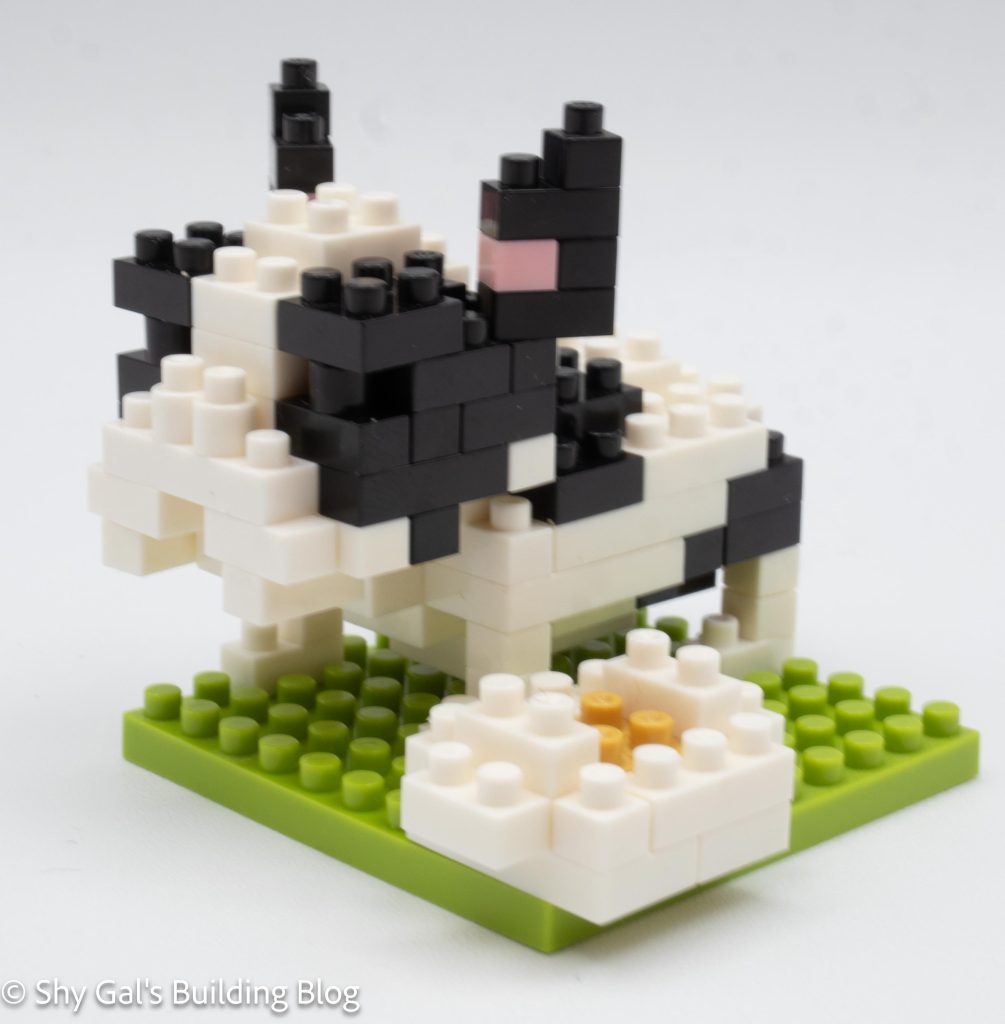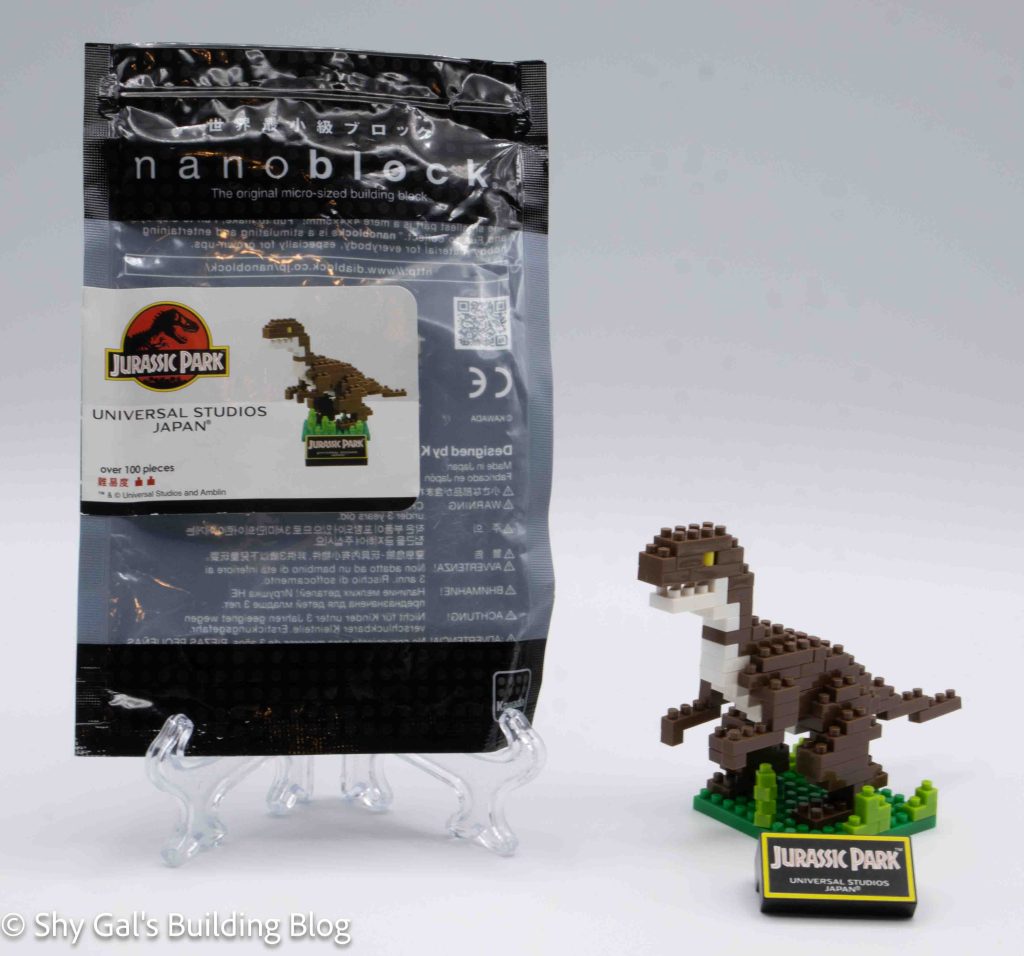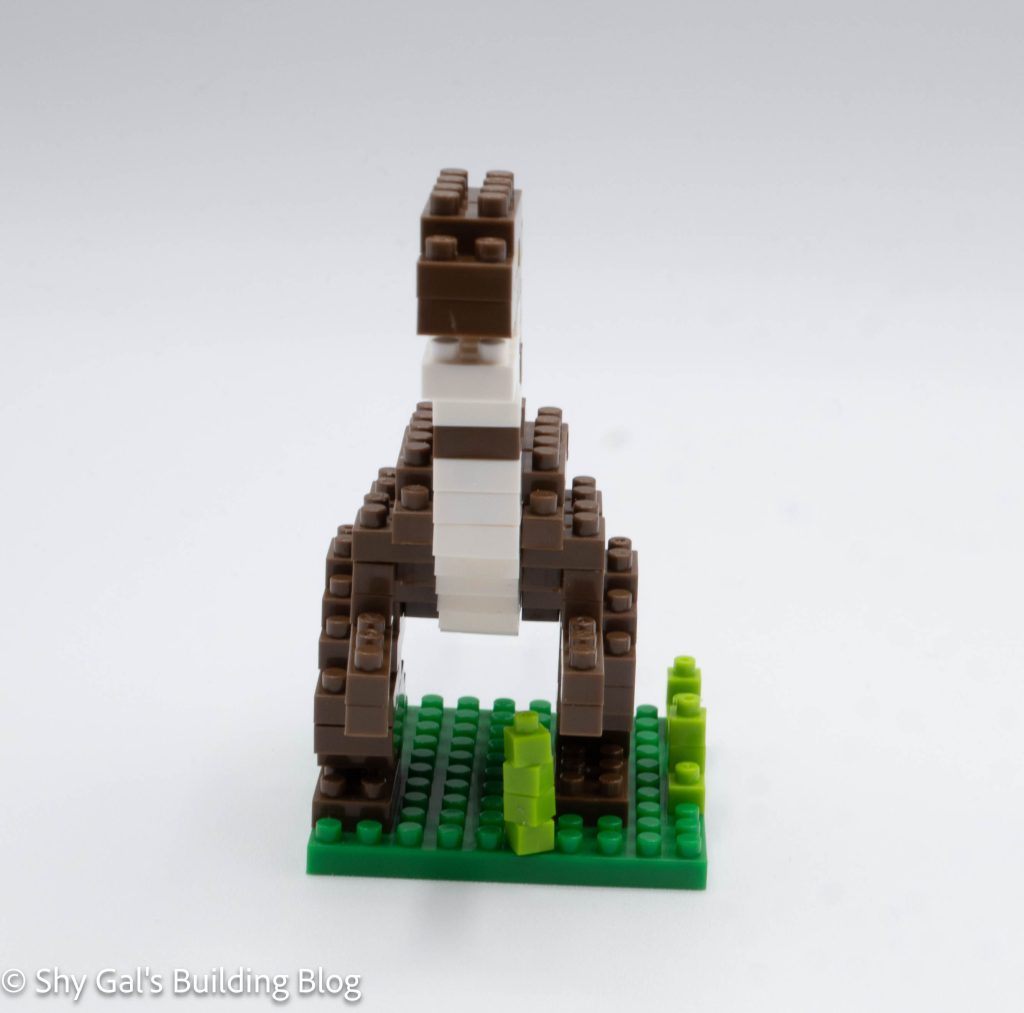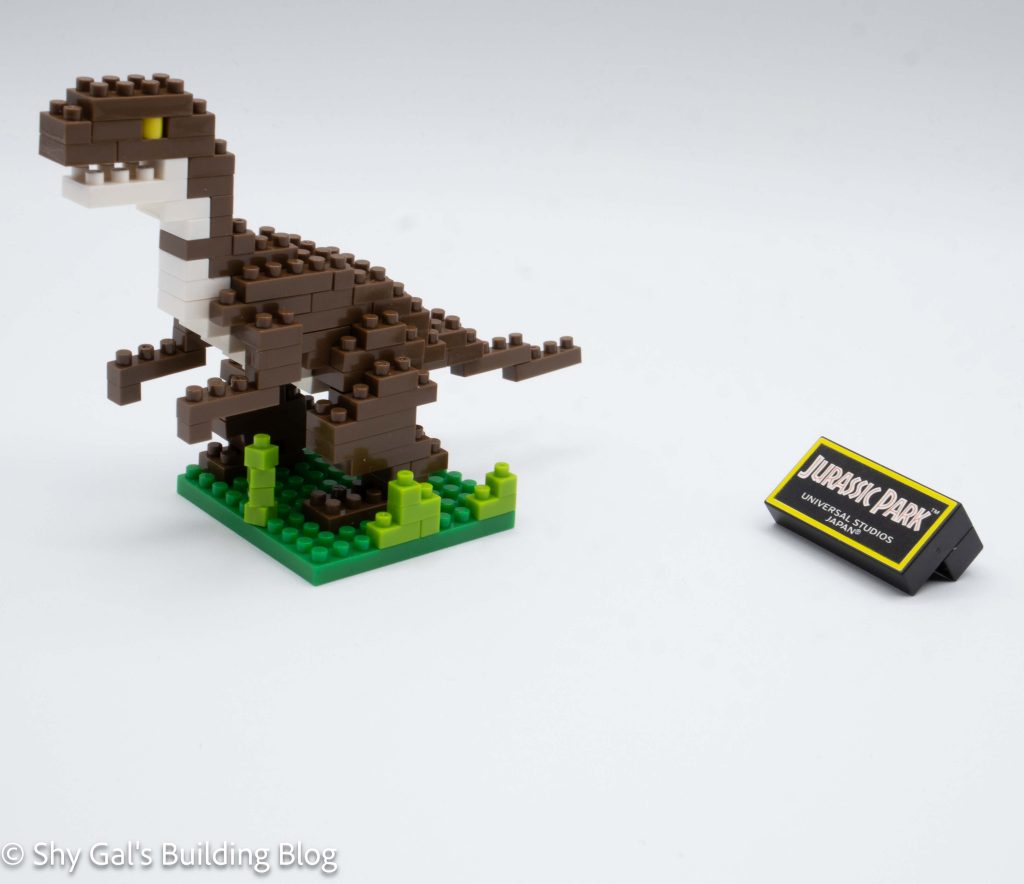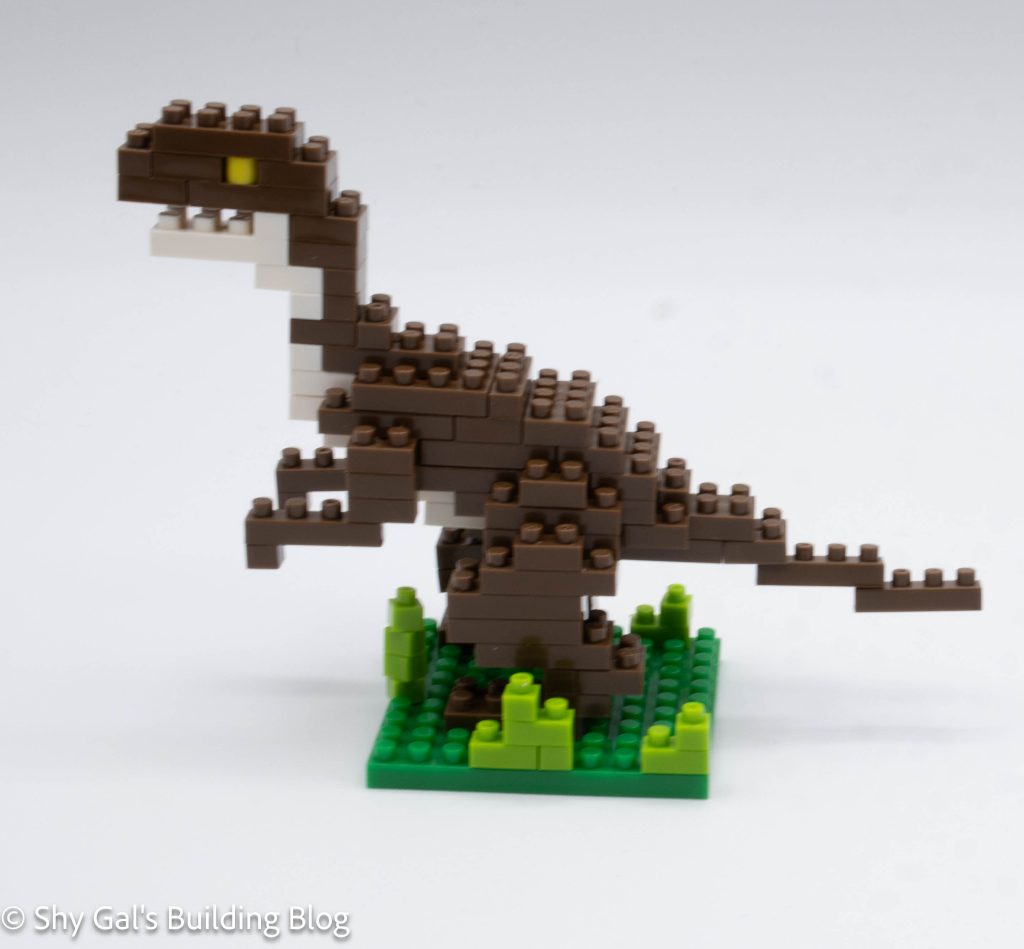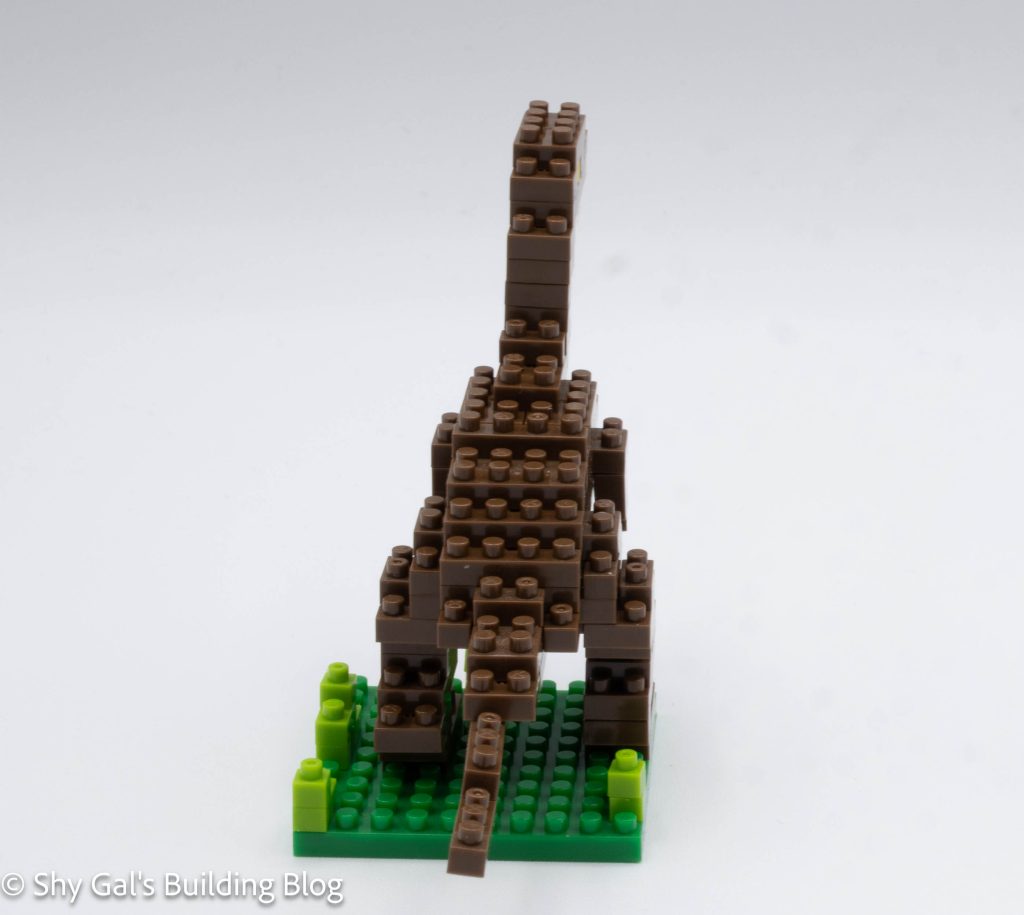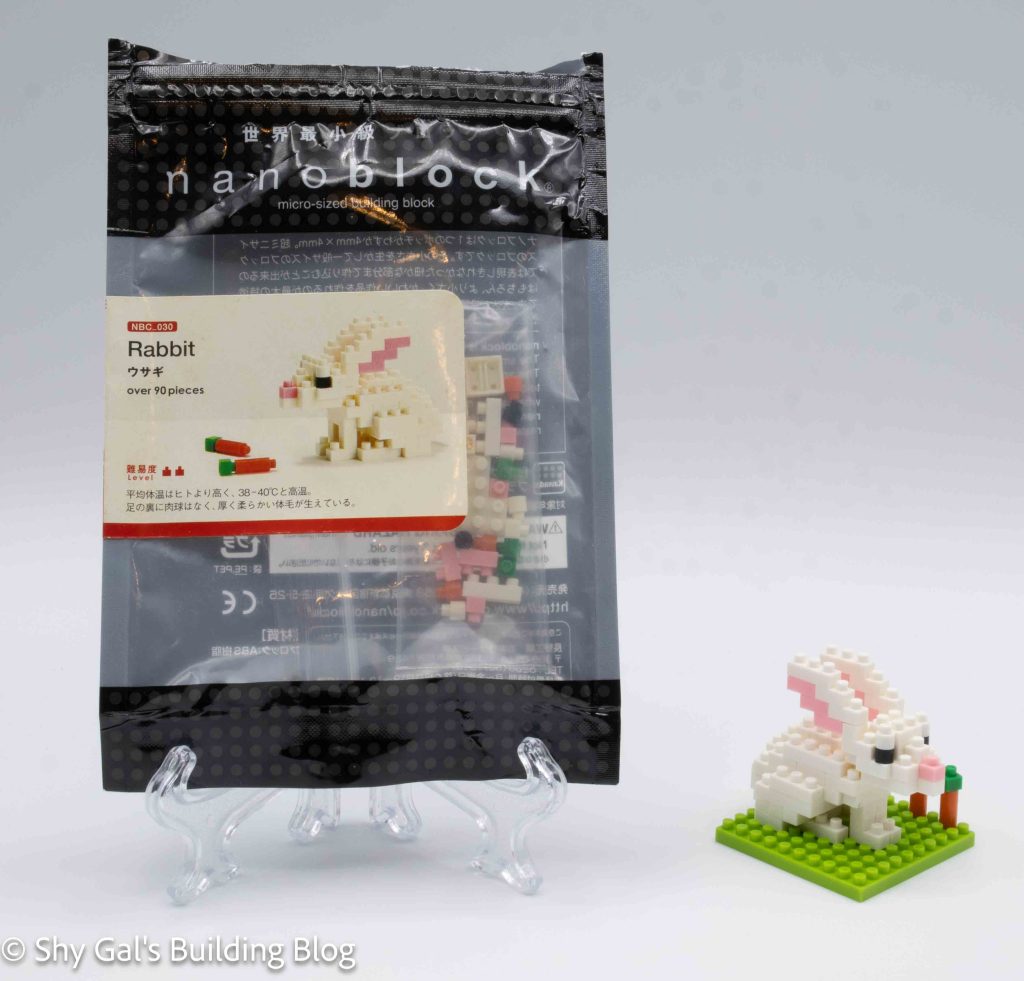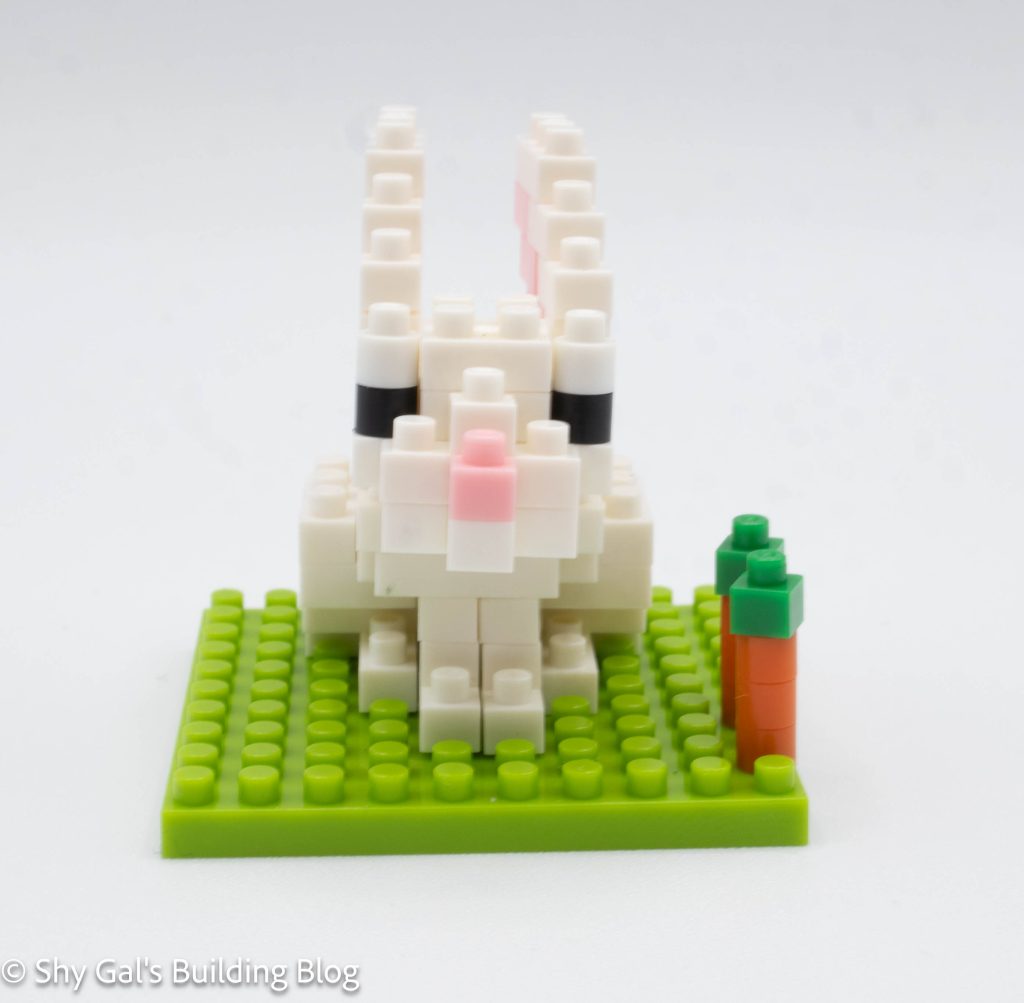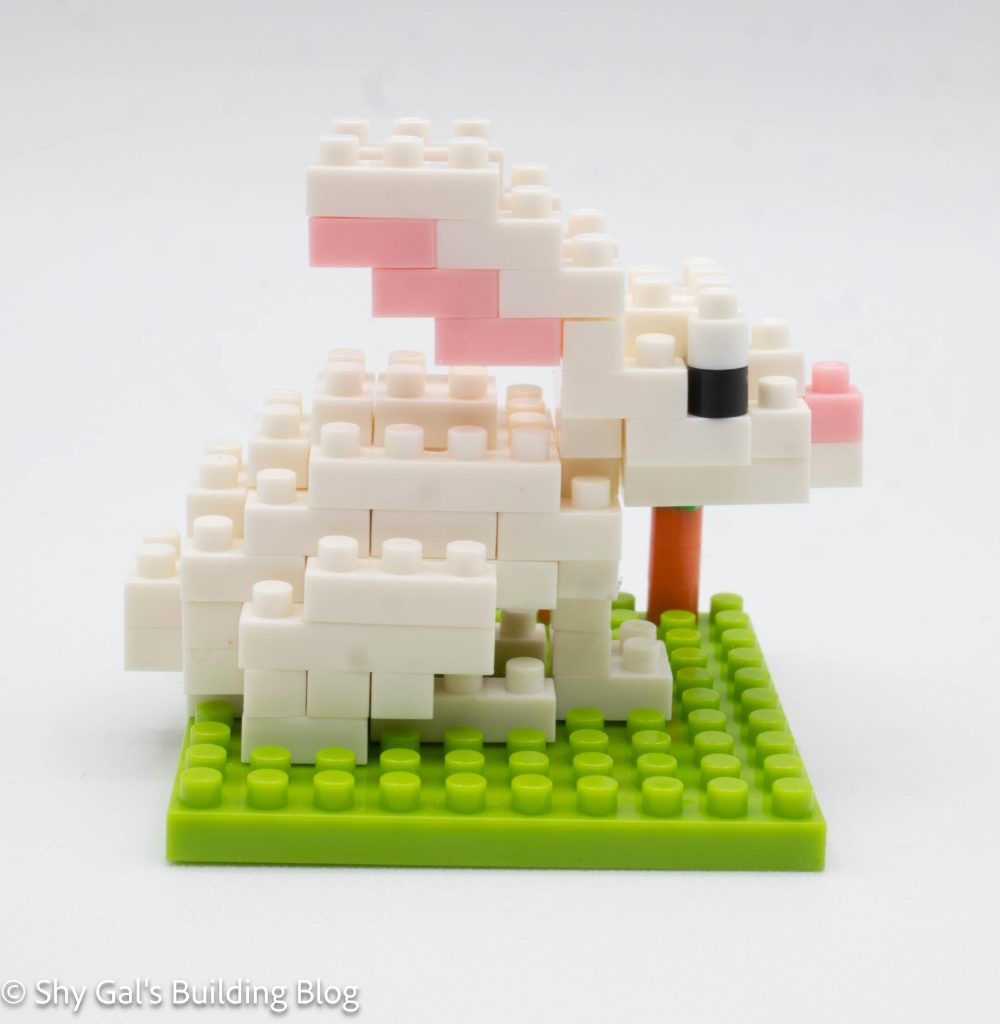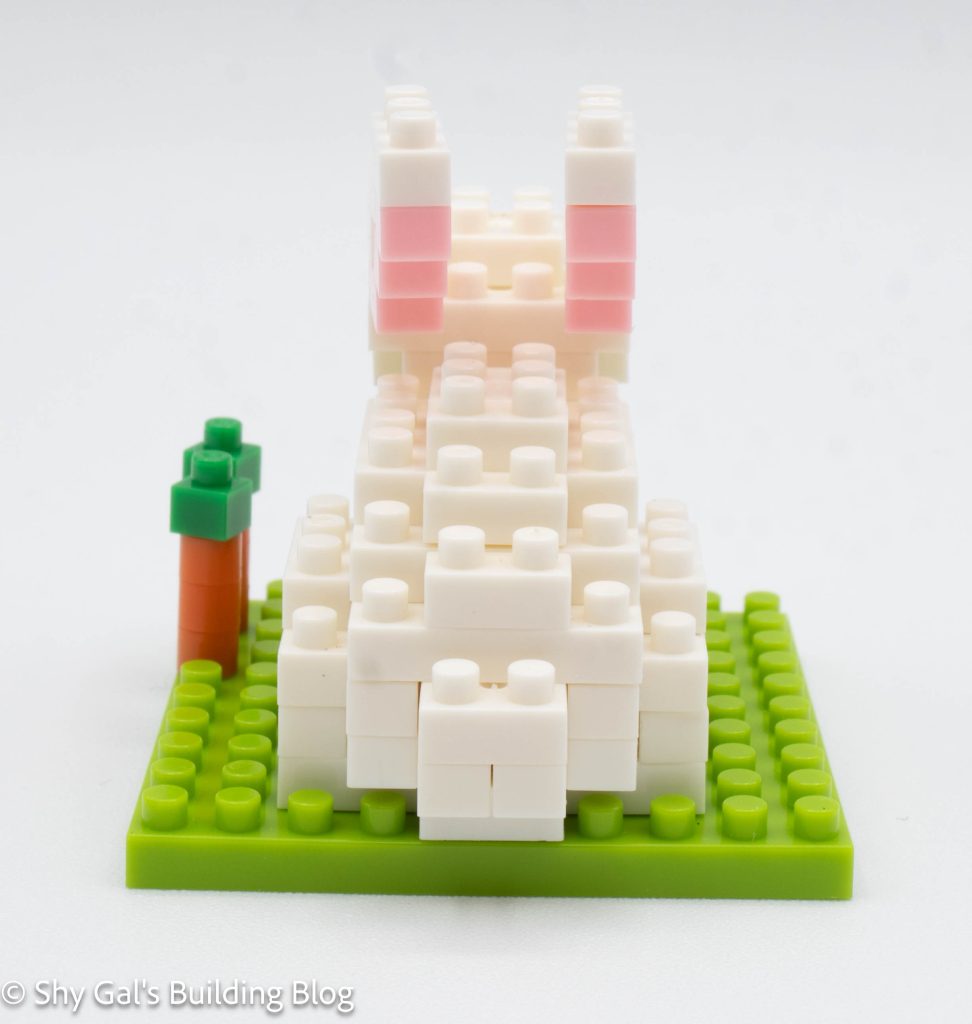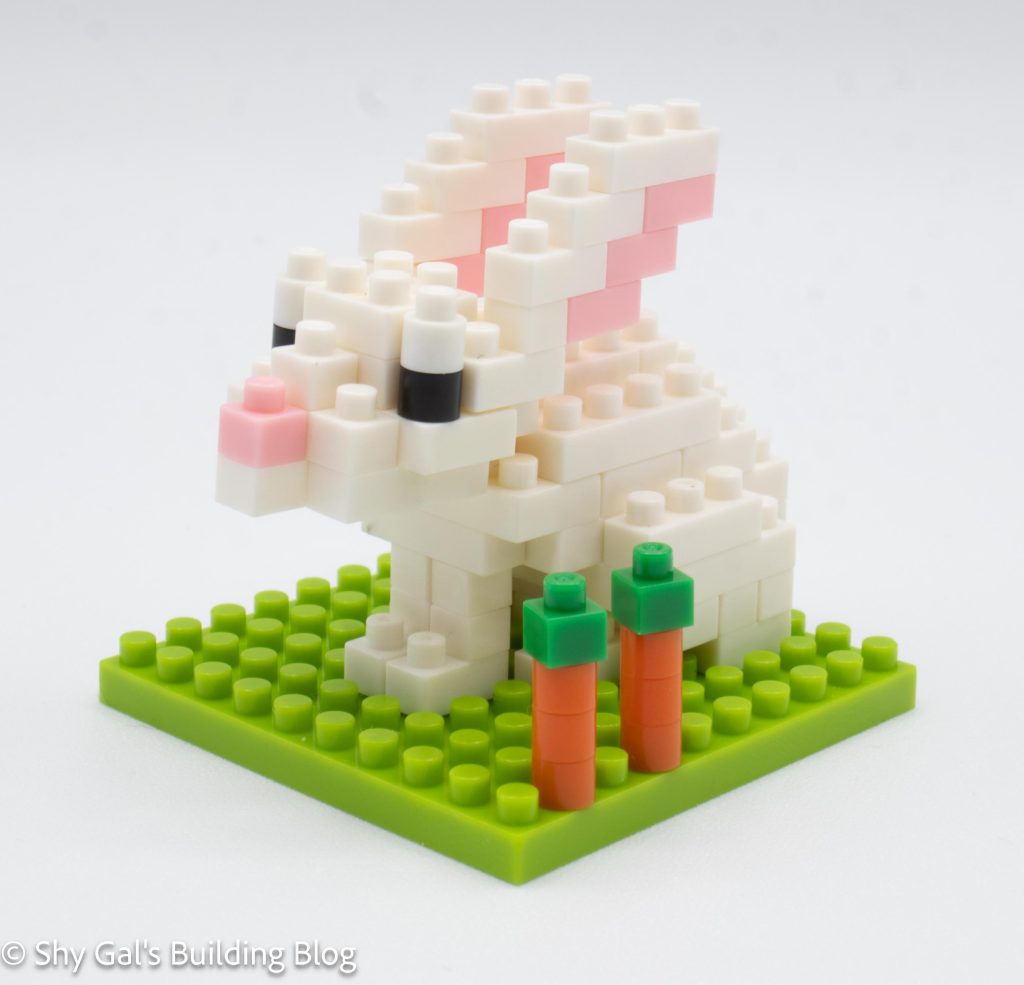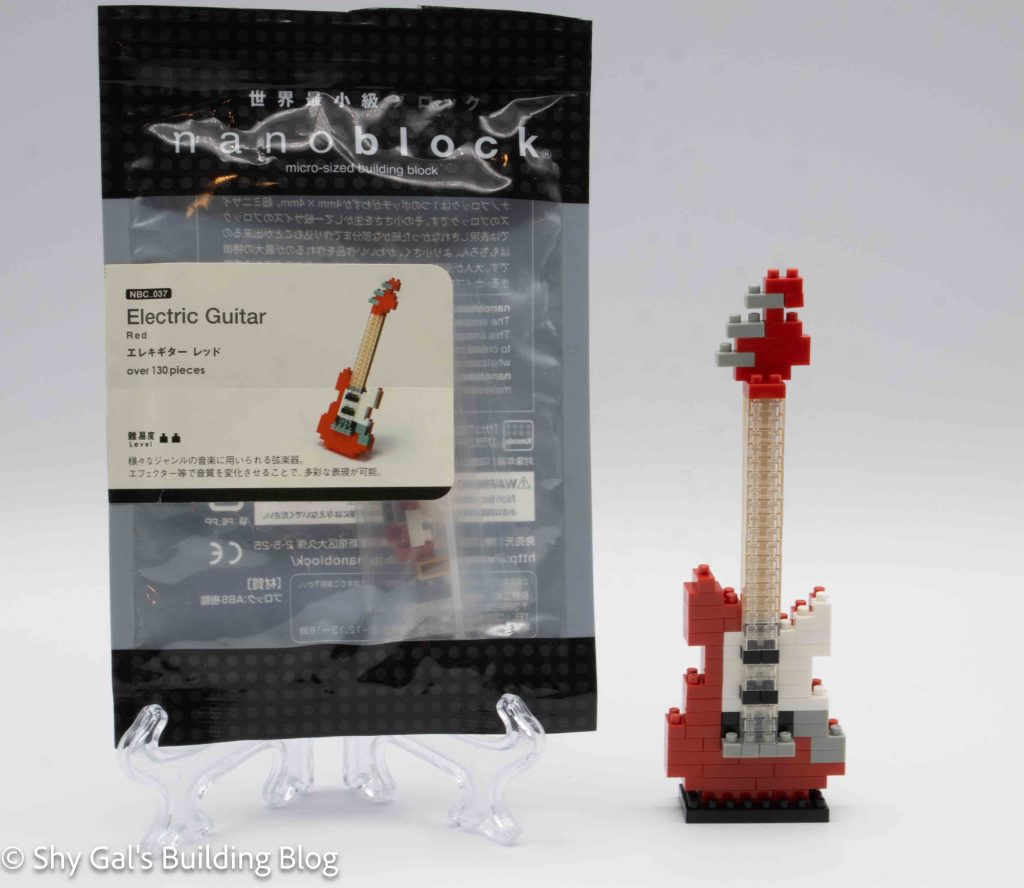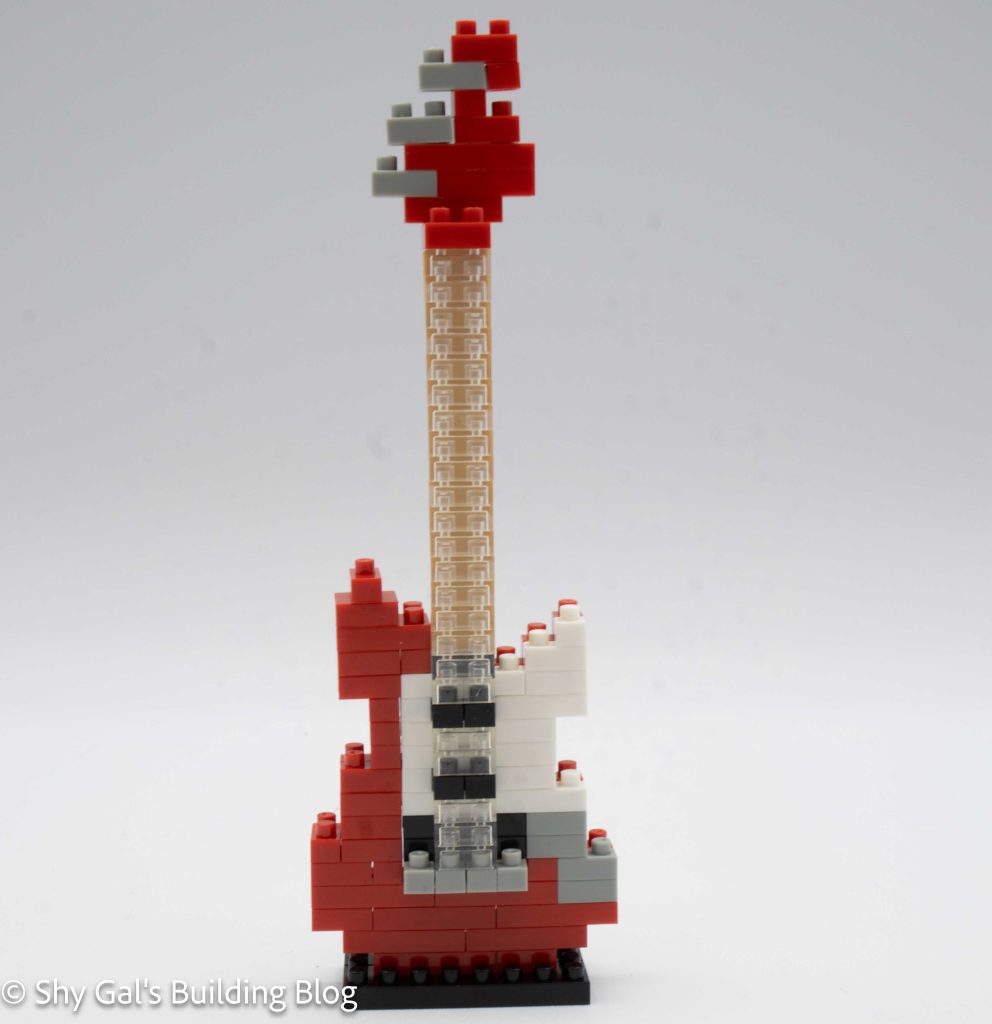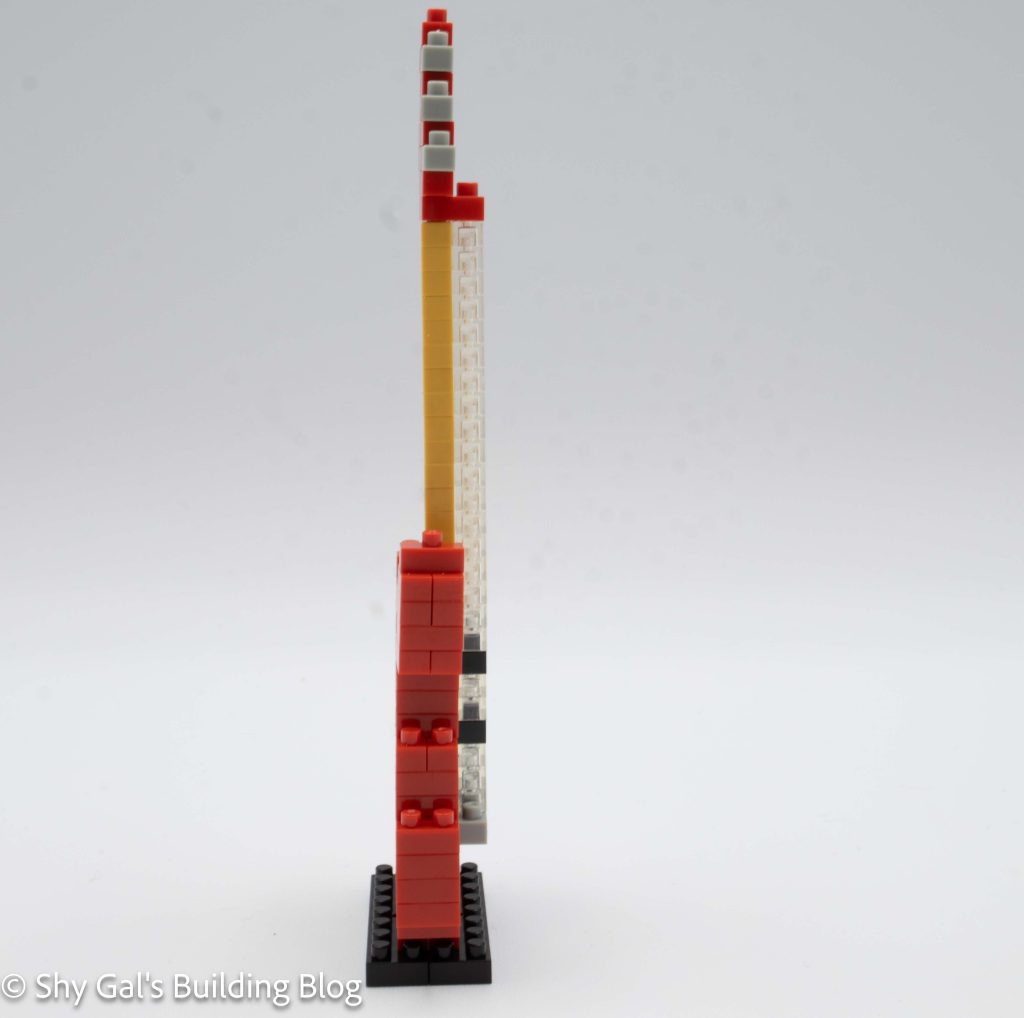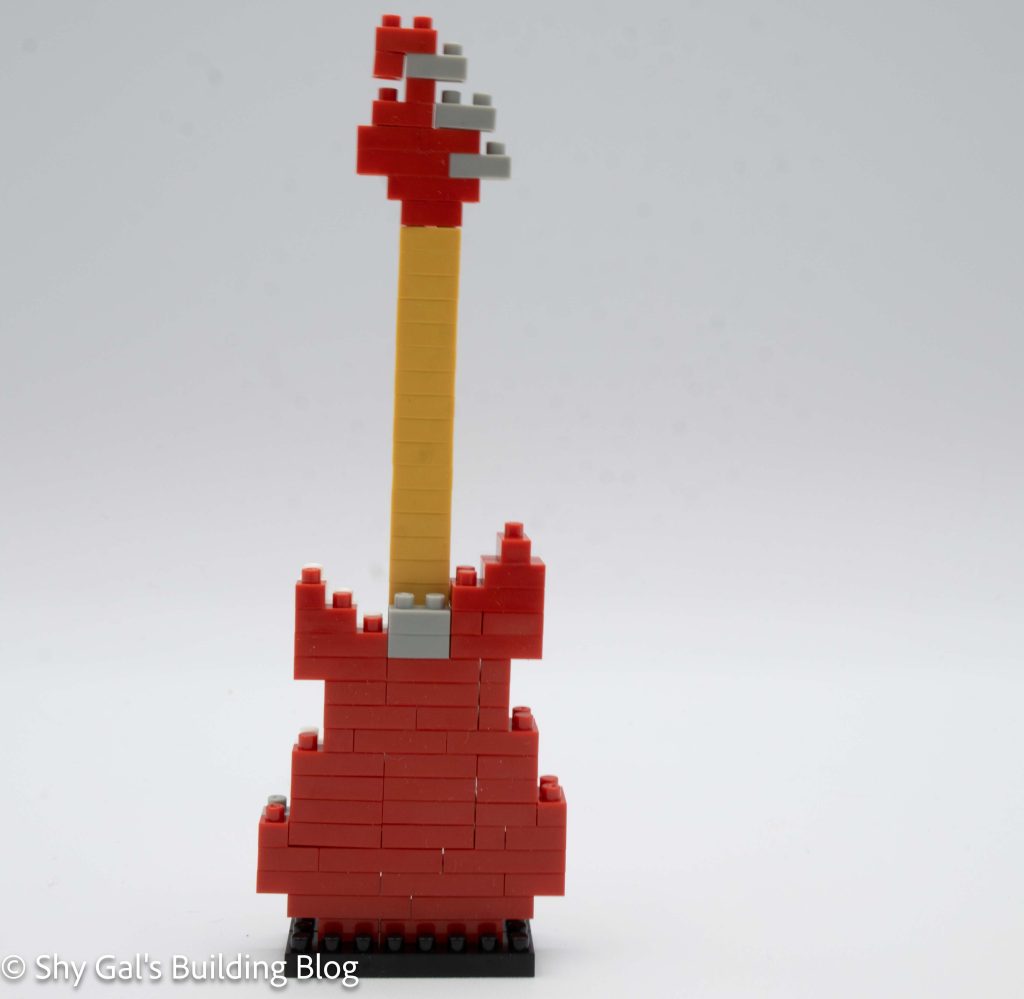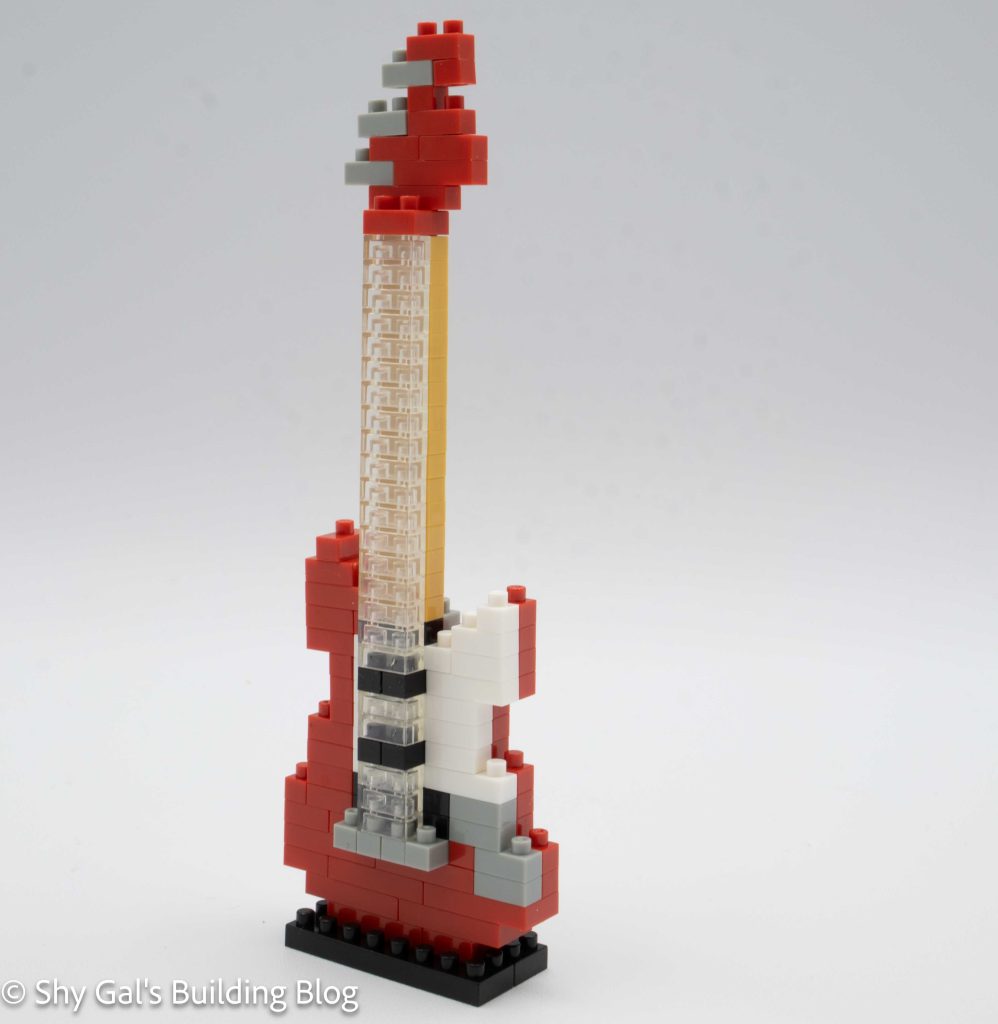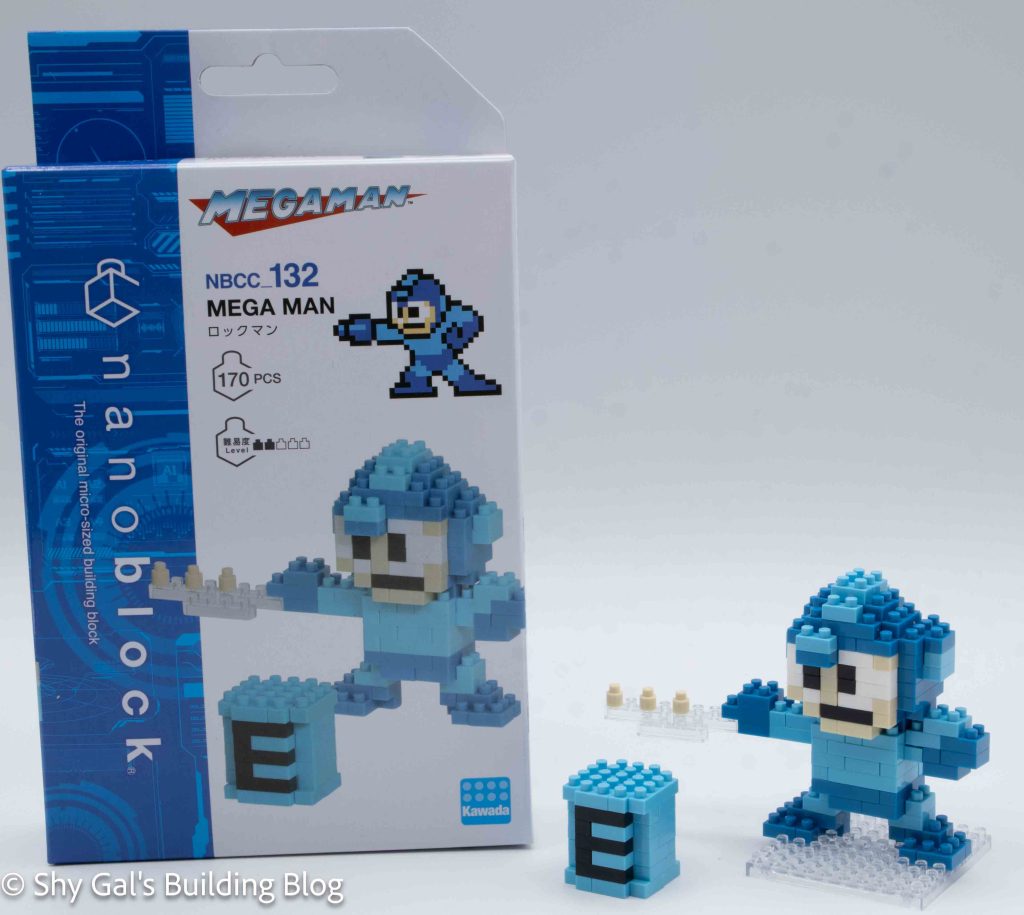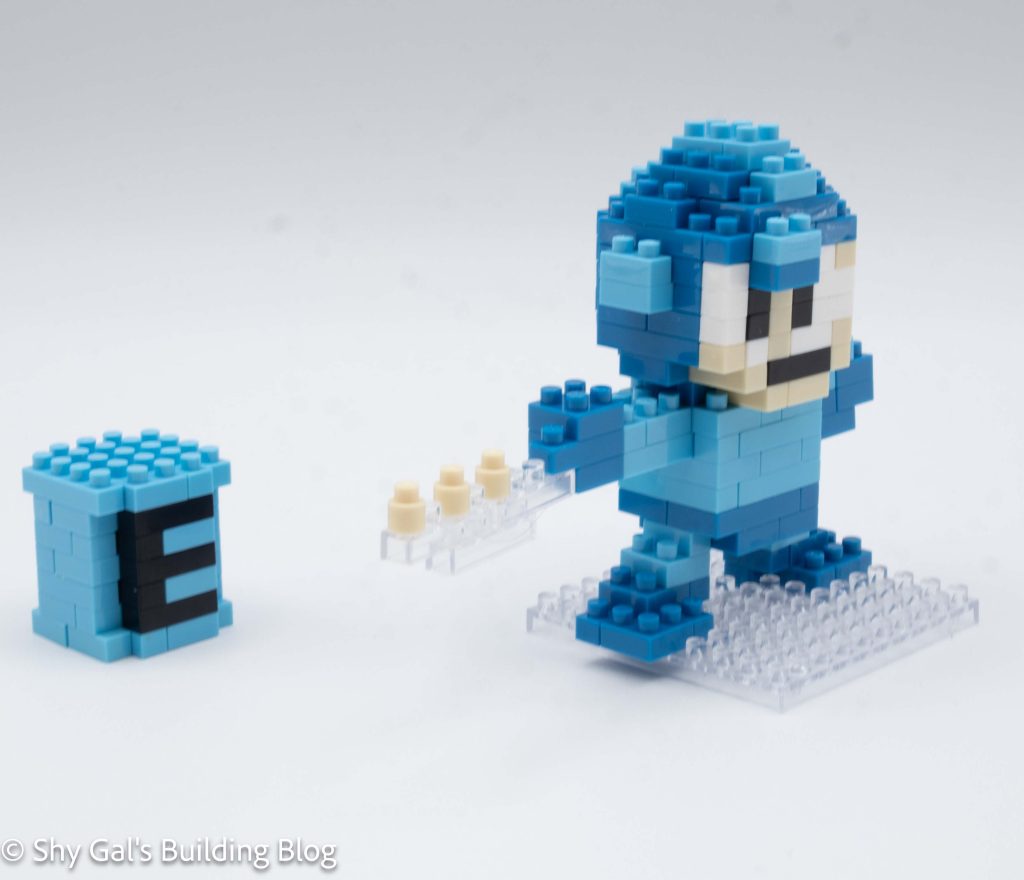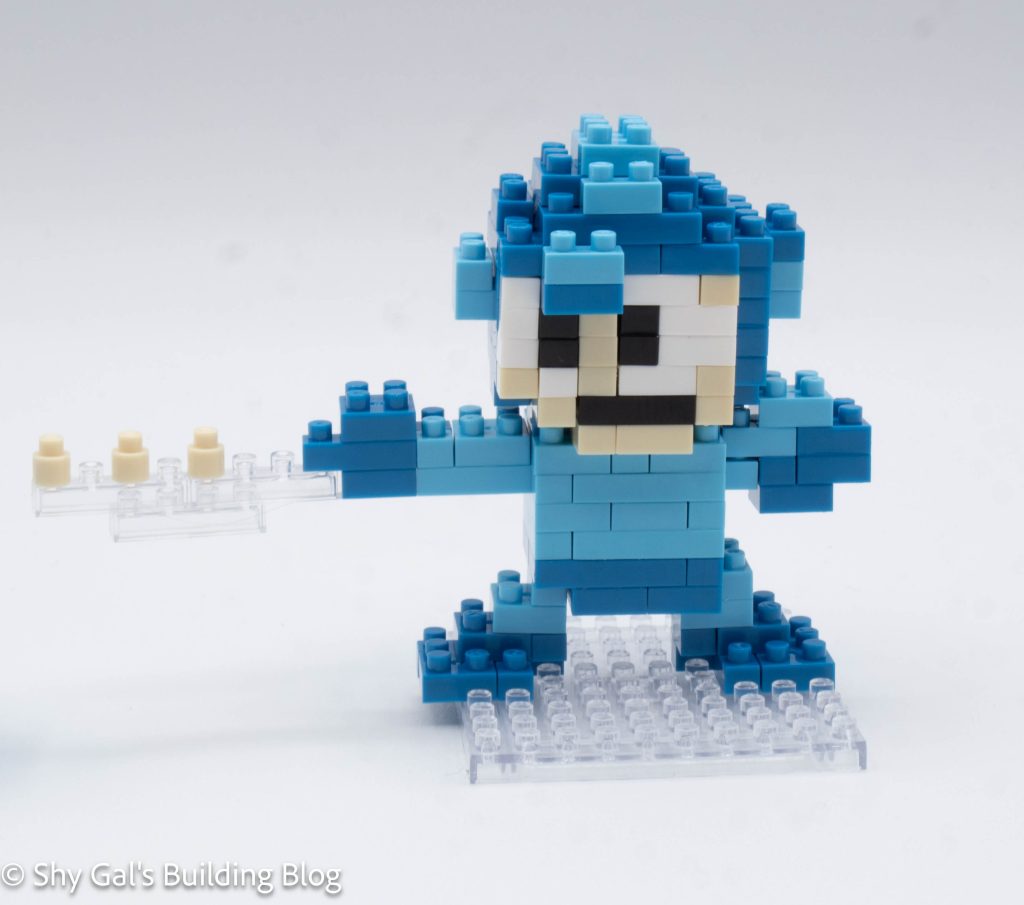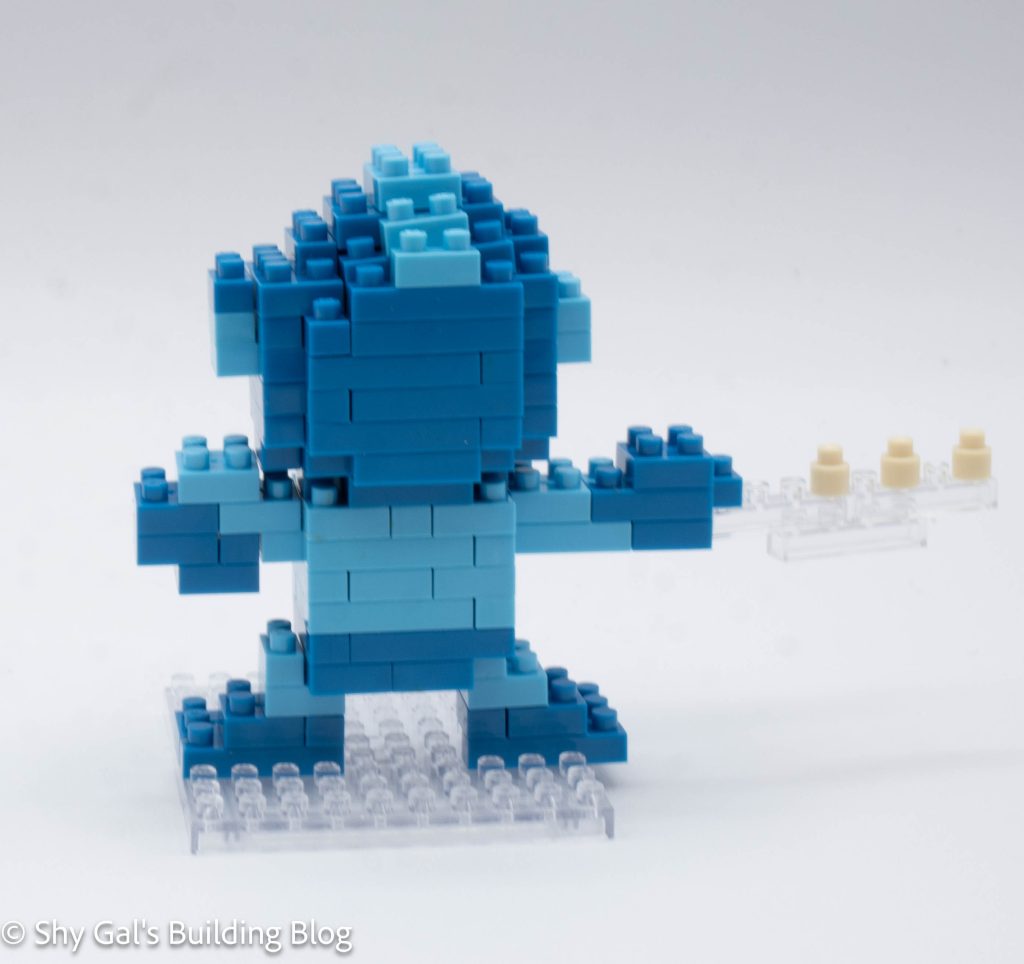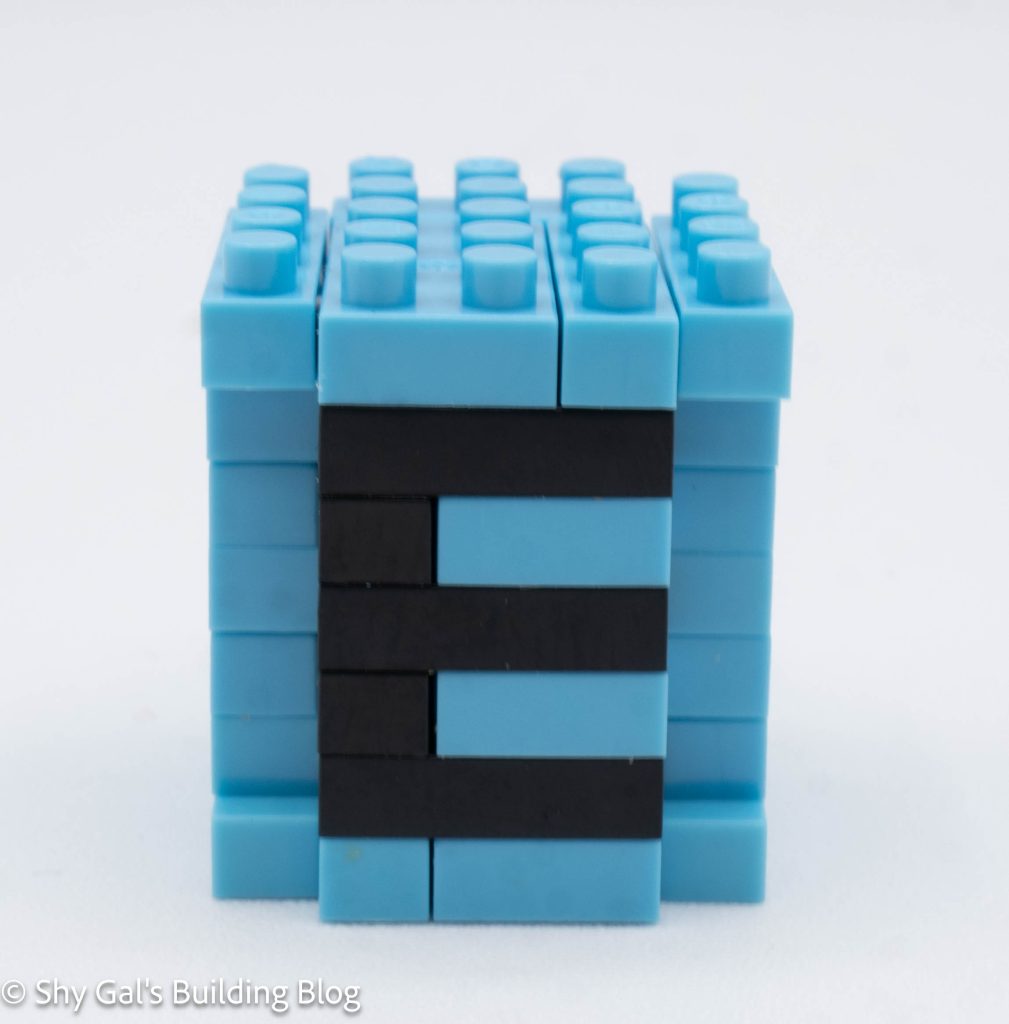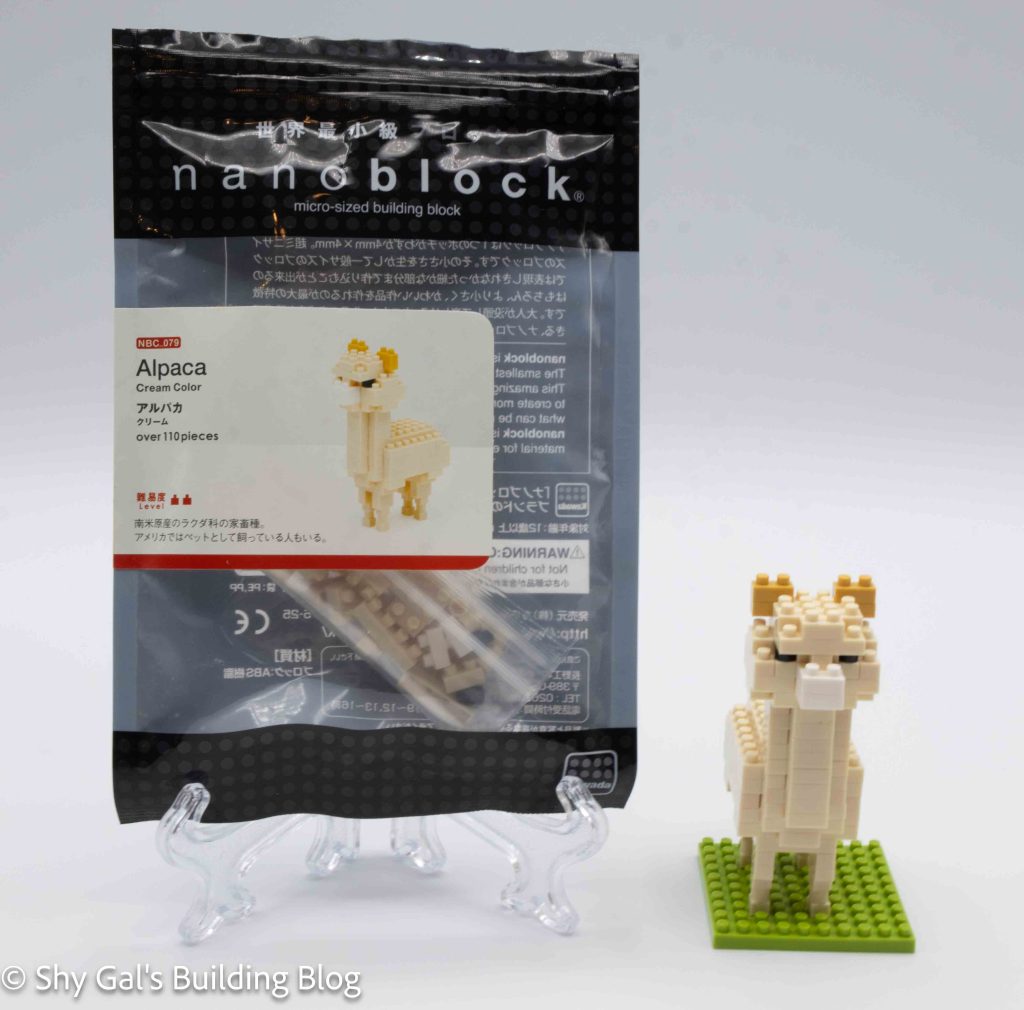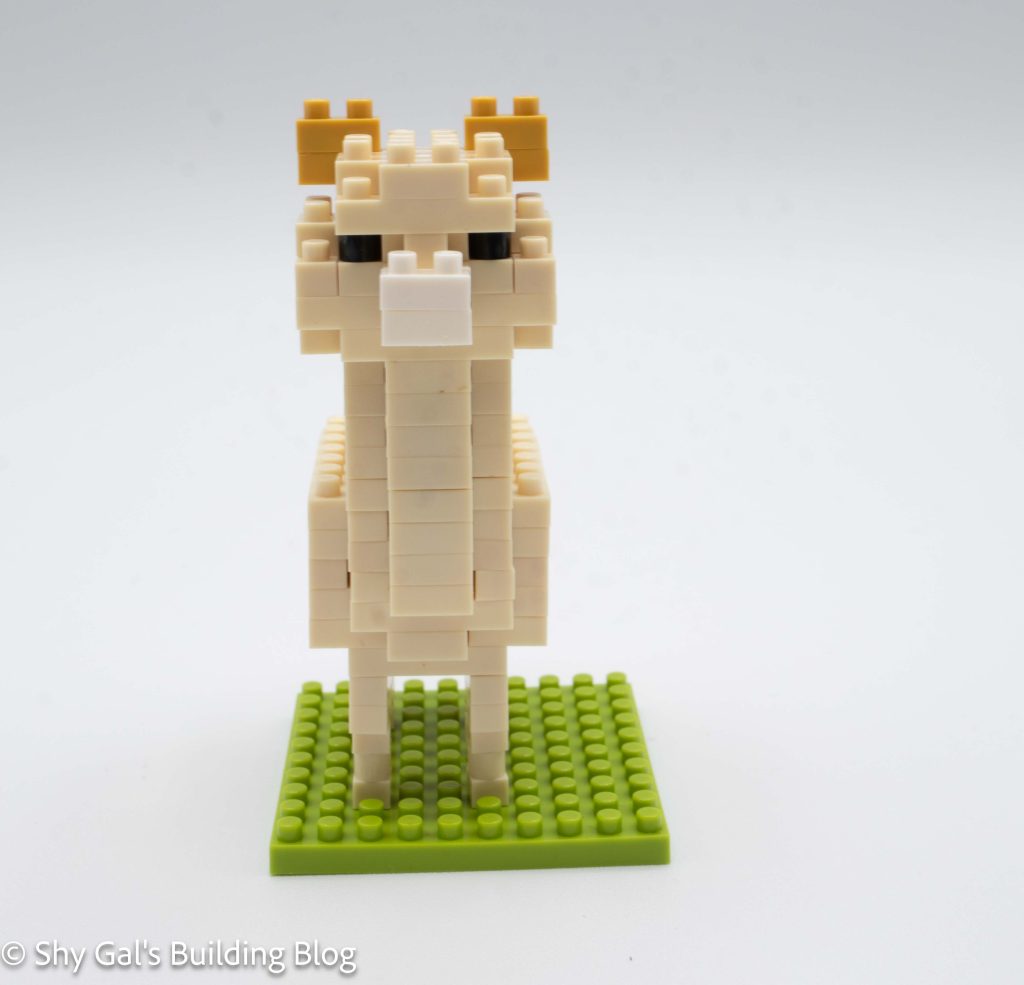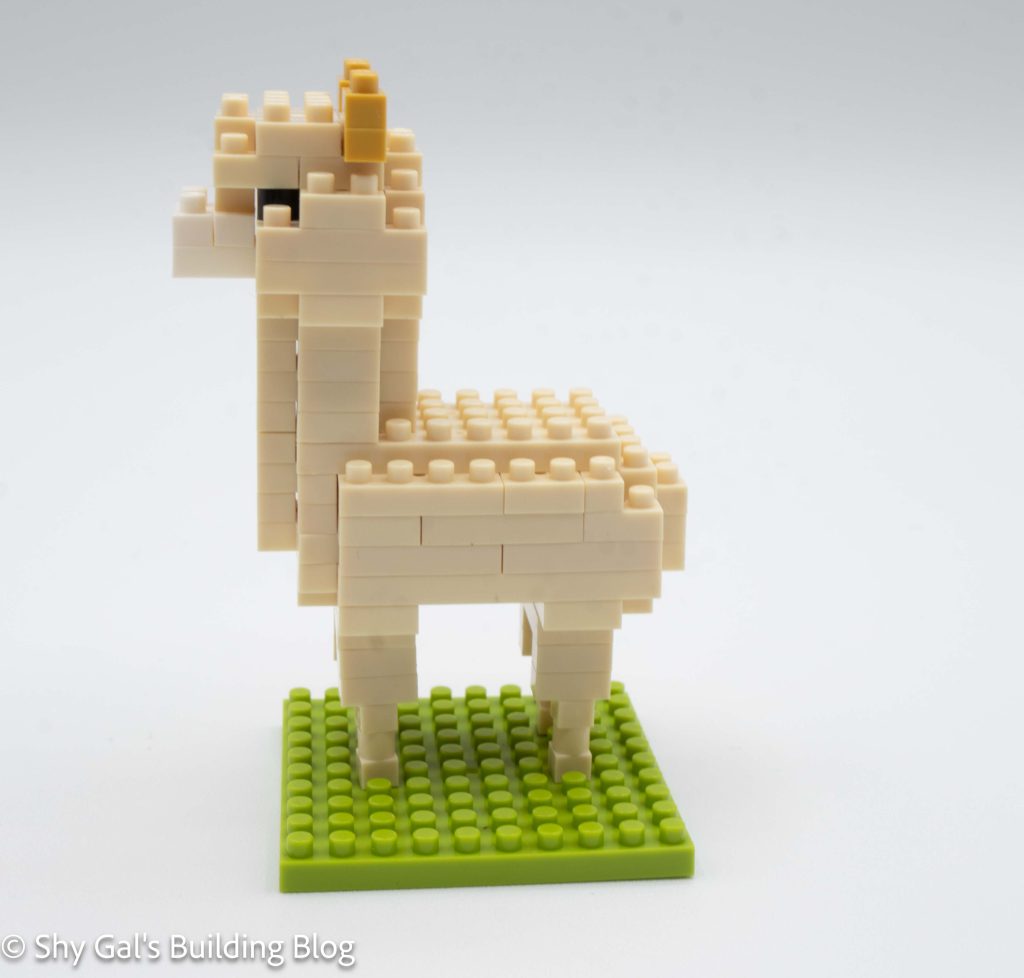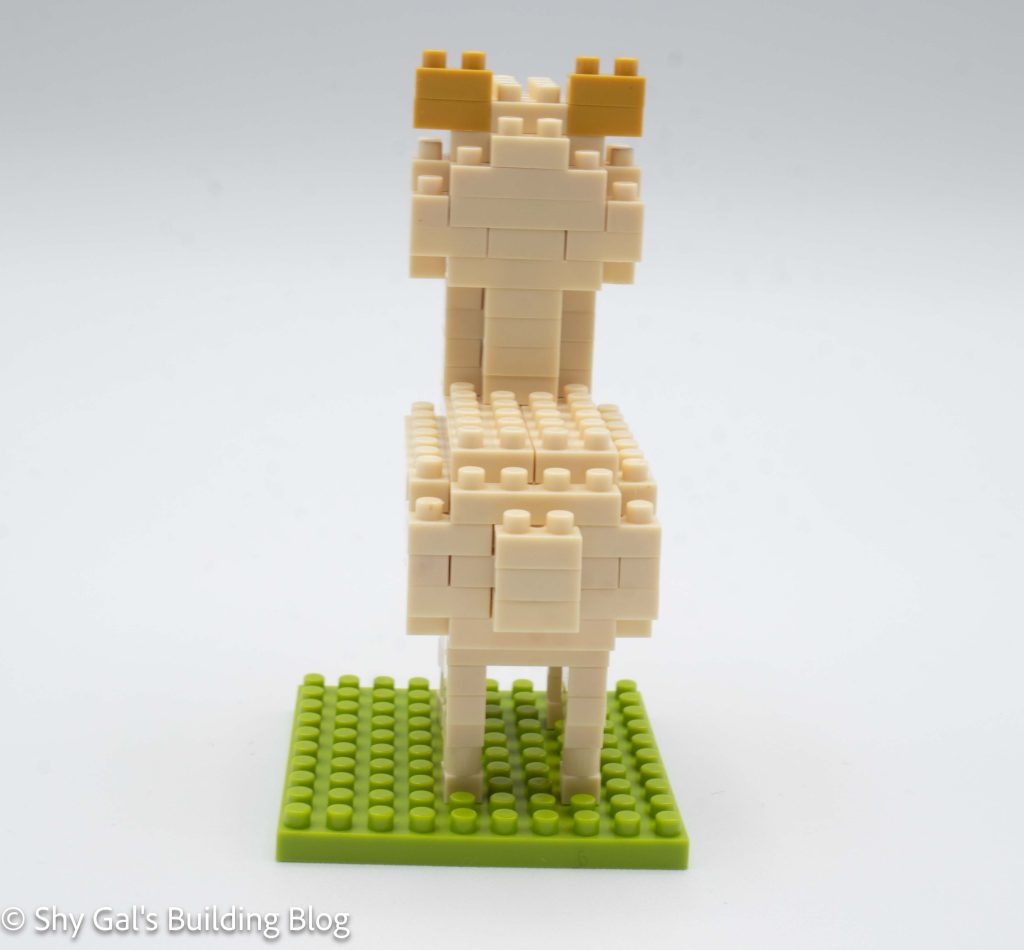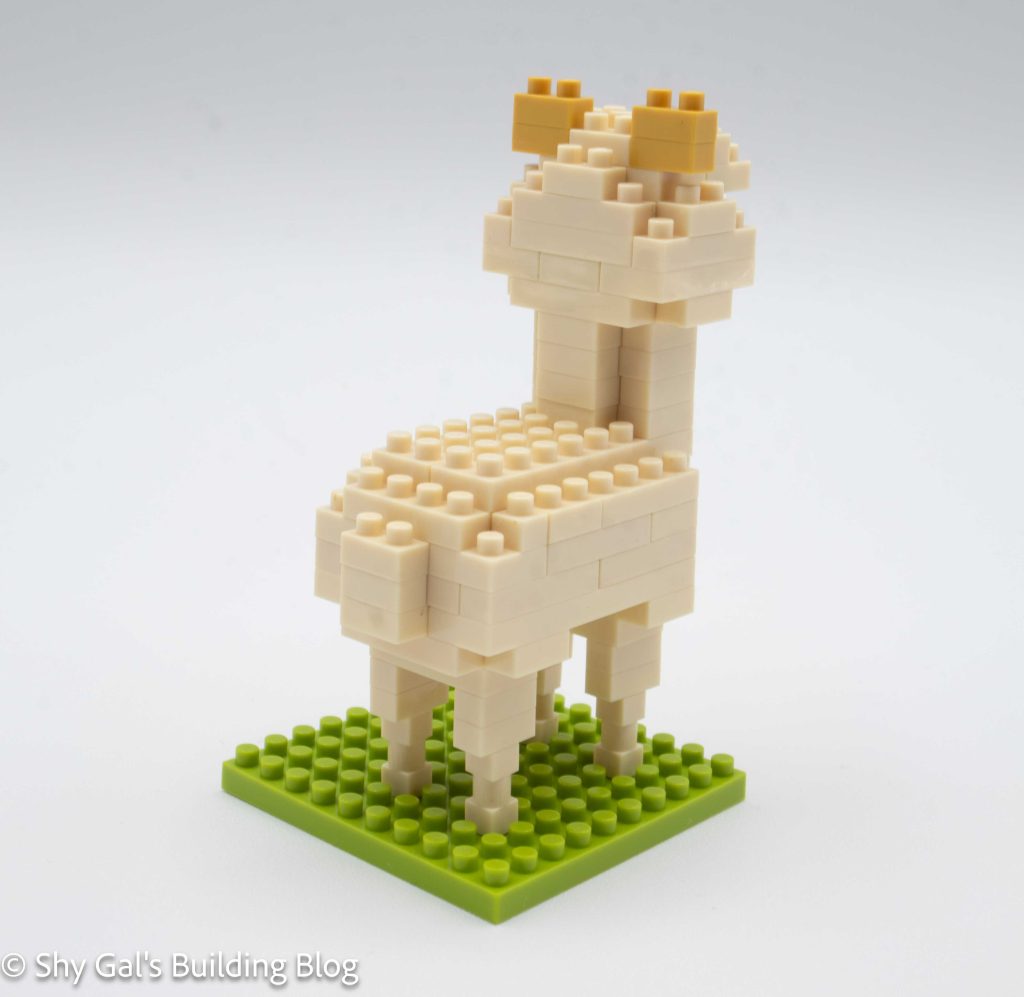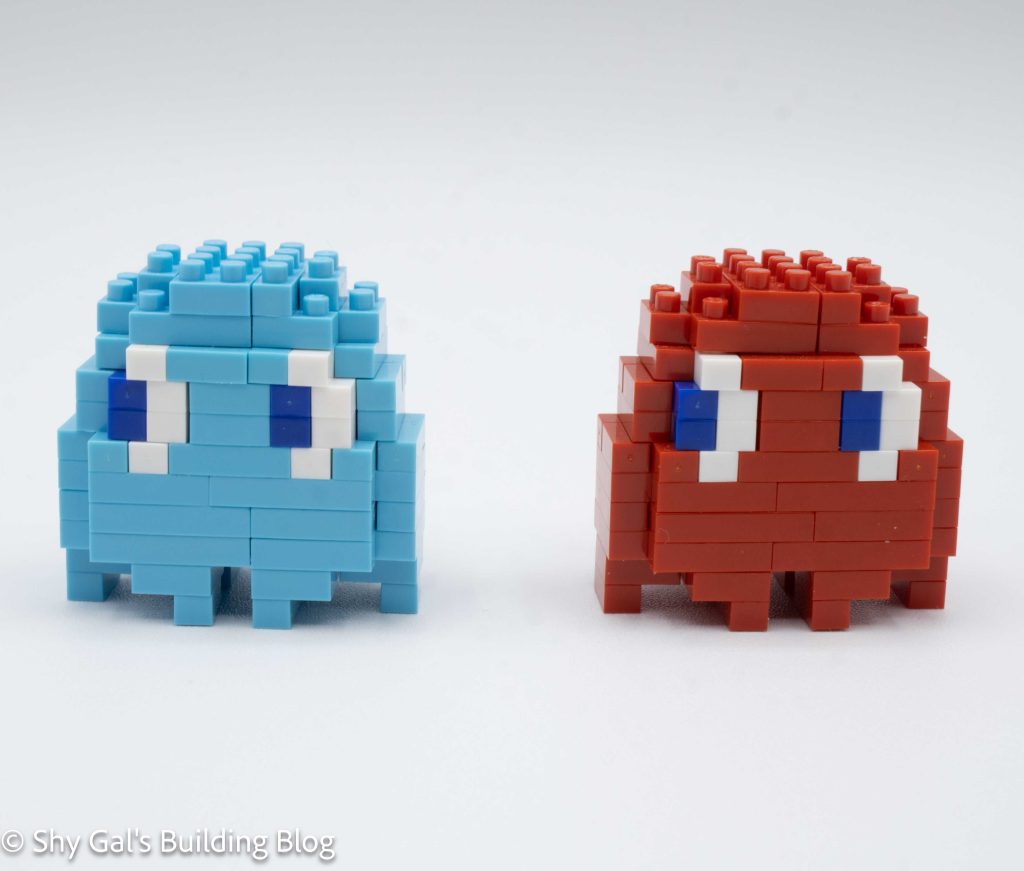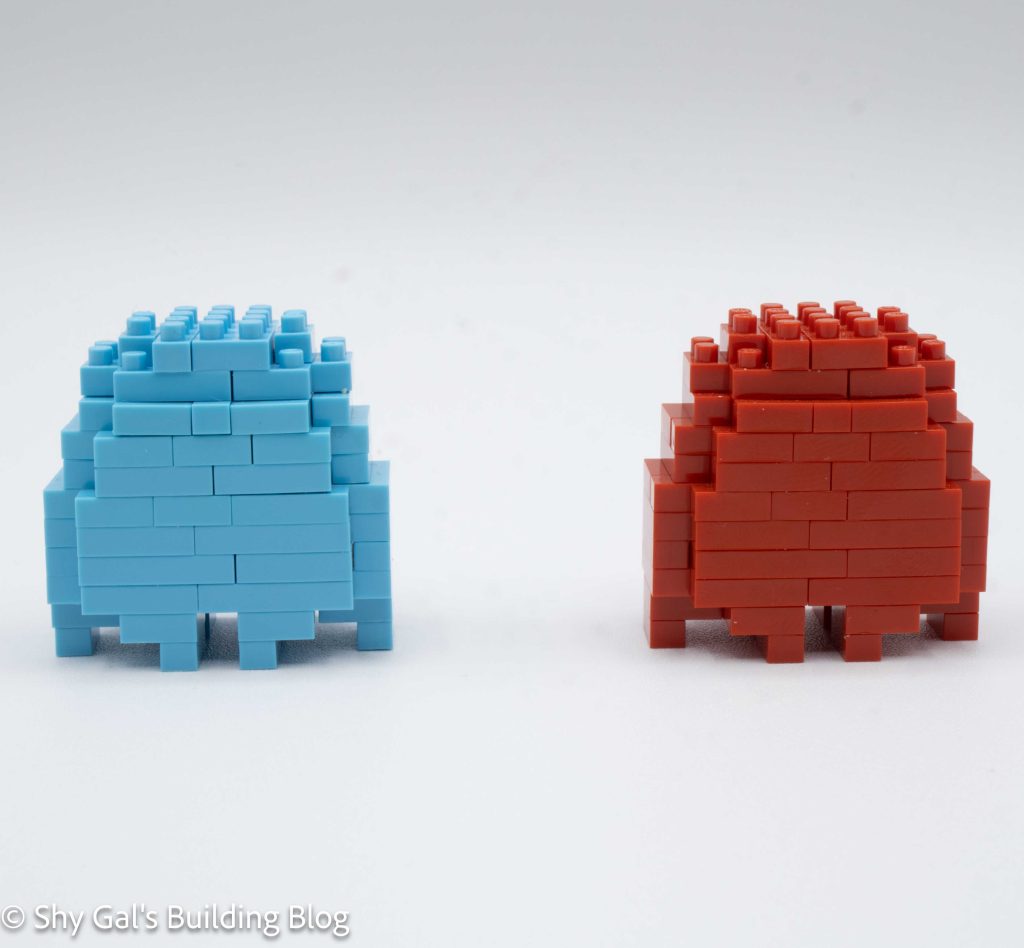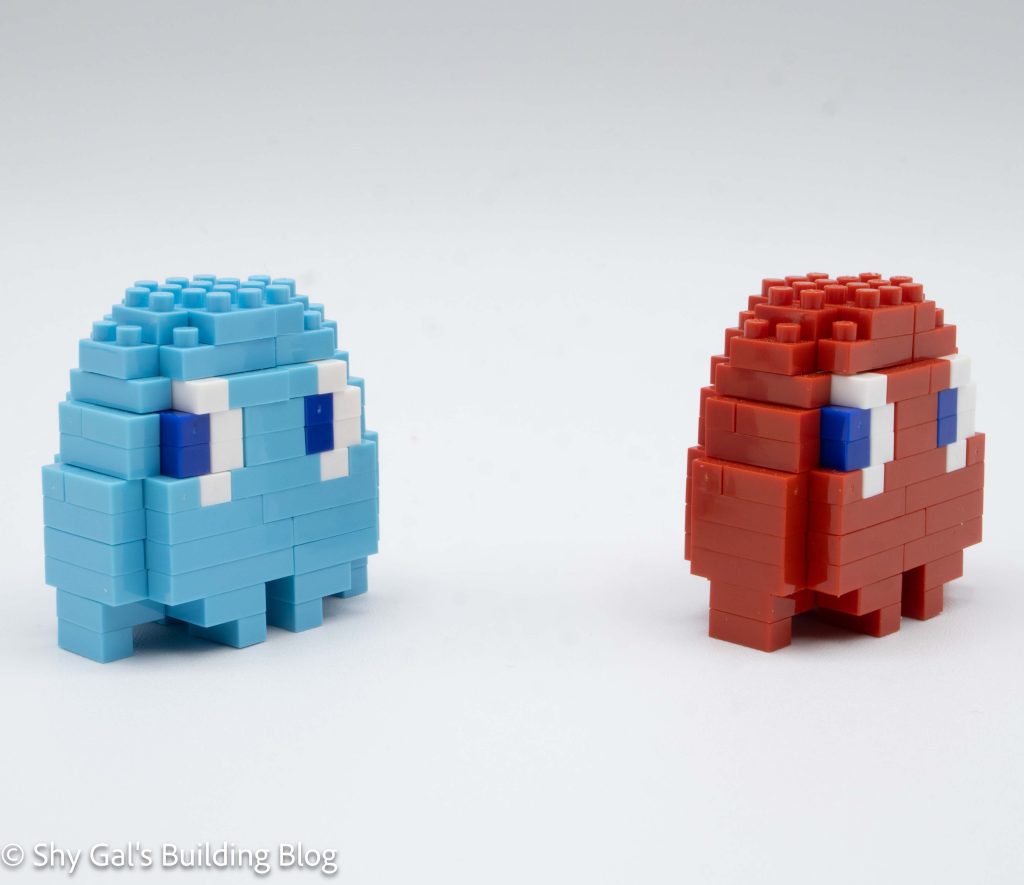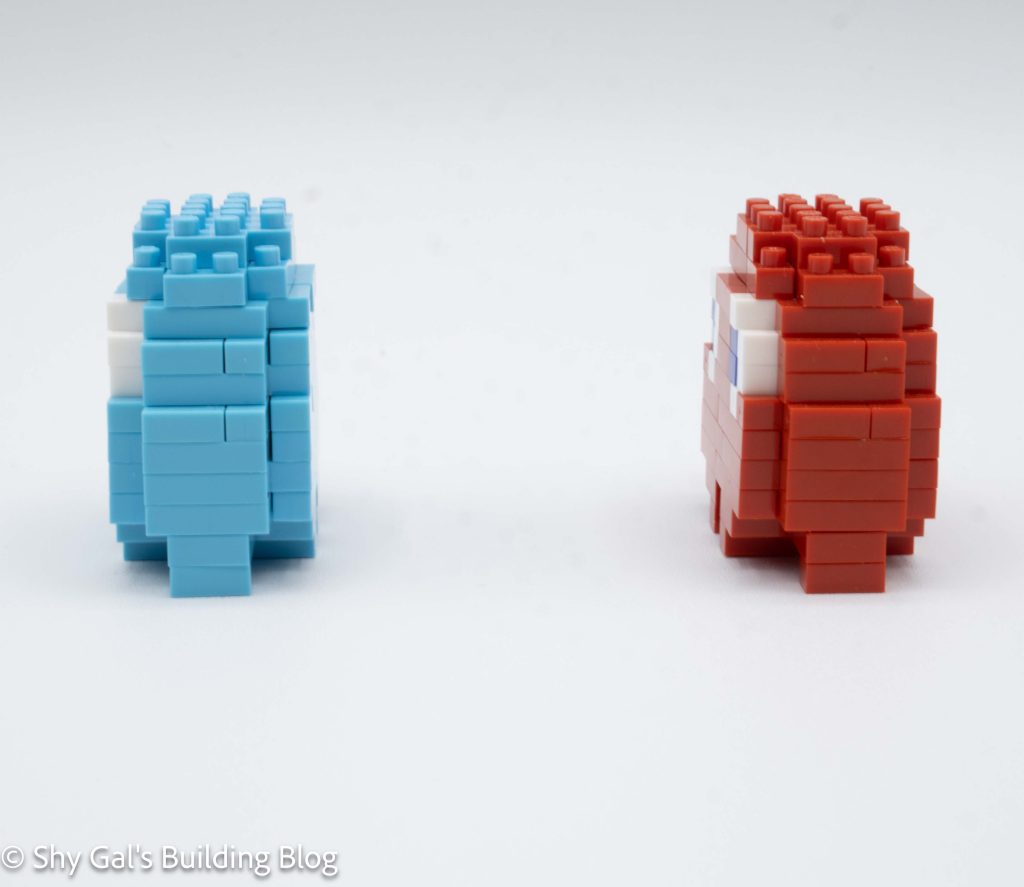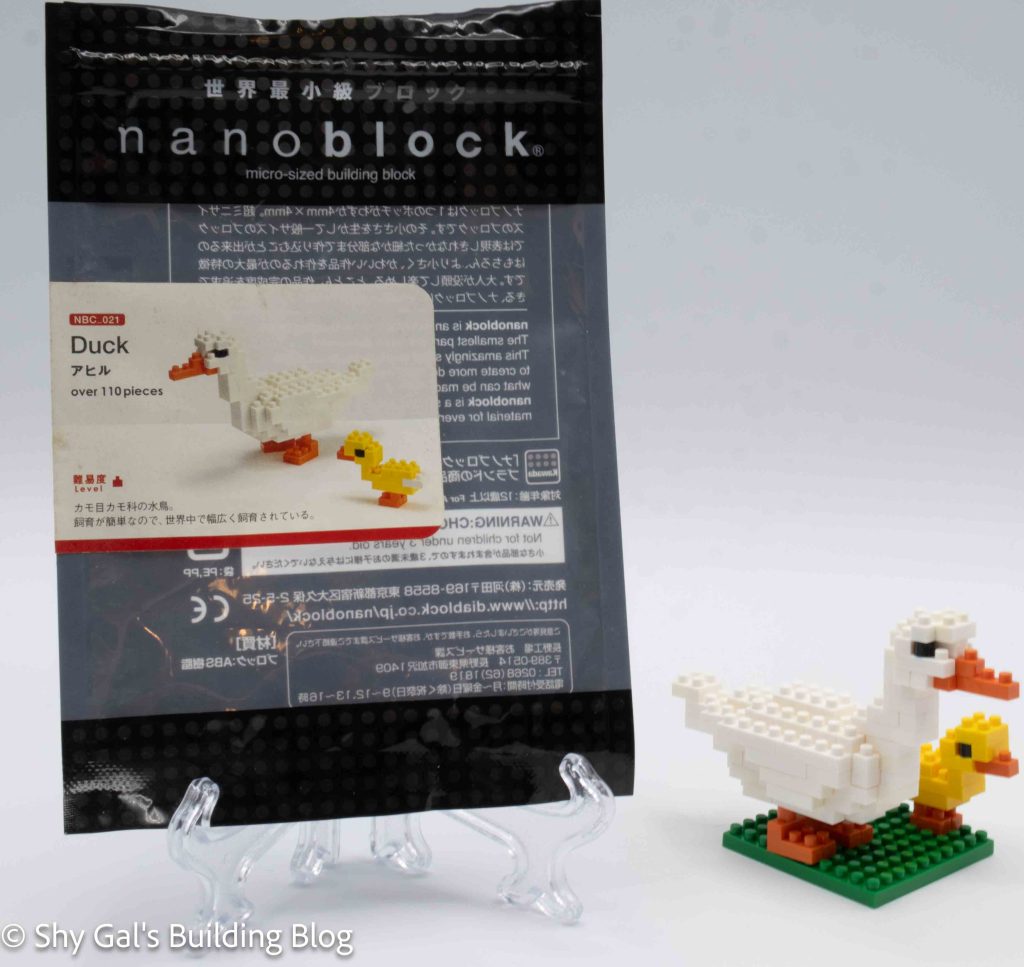
This post is a review of the nanoblock Duck build. Duck is part of the nanoblock Mini Collection series. Wondering what else is part of the Mini Collection? Click here for a list.
Number: NBC_021
Number of Pieces: 110
Difficulty Rating: 1
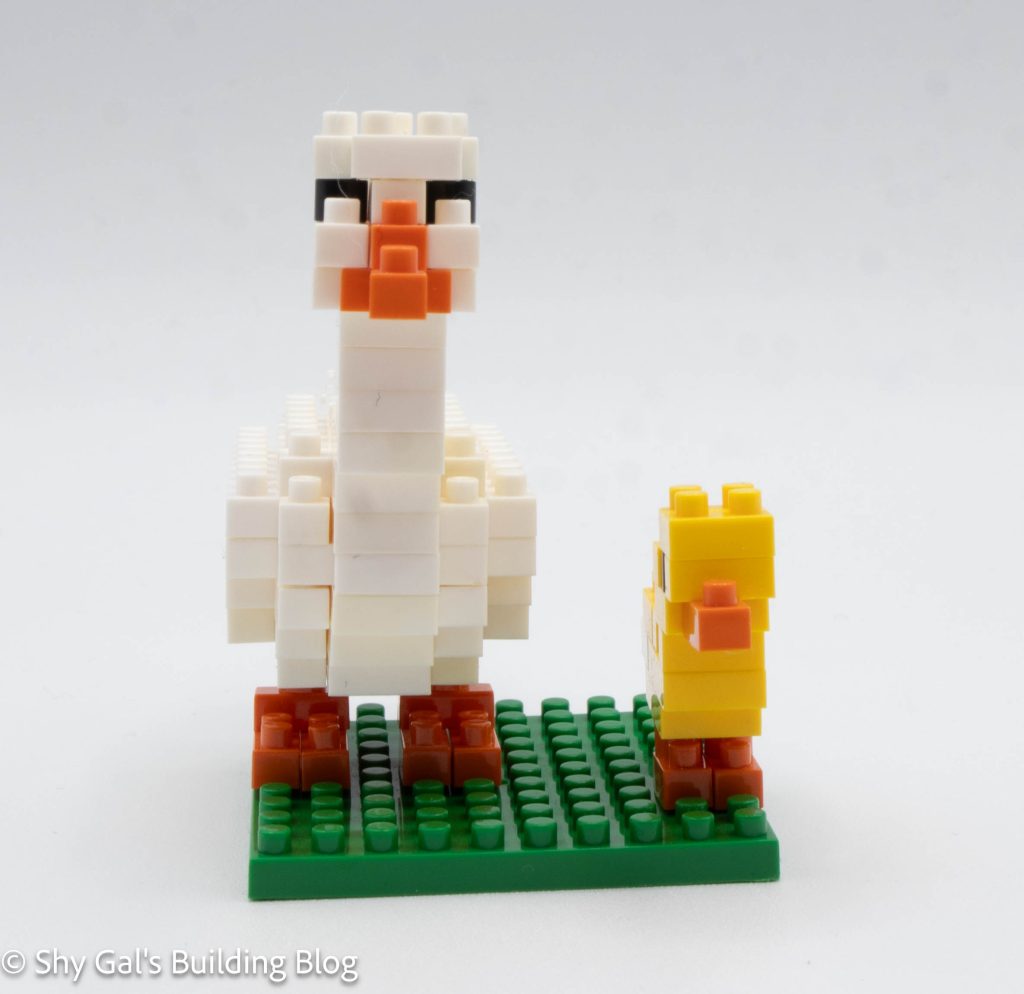
I bought this kit used, knowing I would at least get the instructions. I also ended up getting all the bricks to complete the kit. Sadly, however, the white has become yellow with age. The discolored bricks may be visible in my photographs.
This build has 2 sections. There is an adult duck and a baby duck.
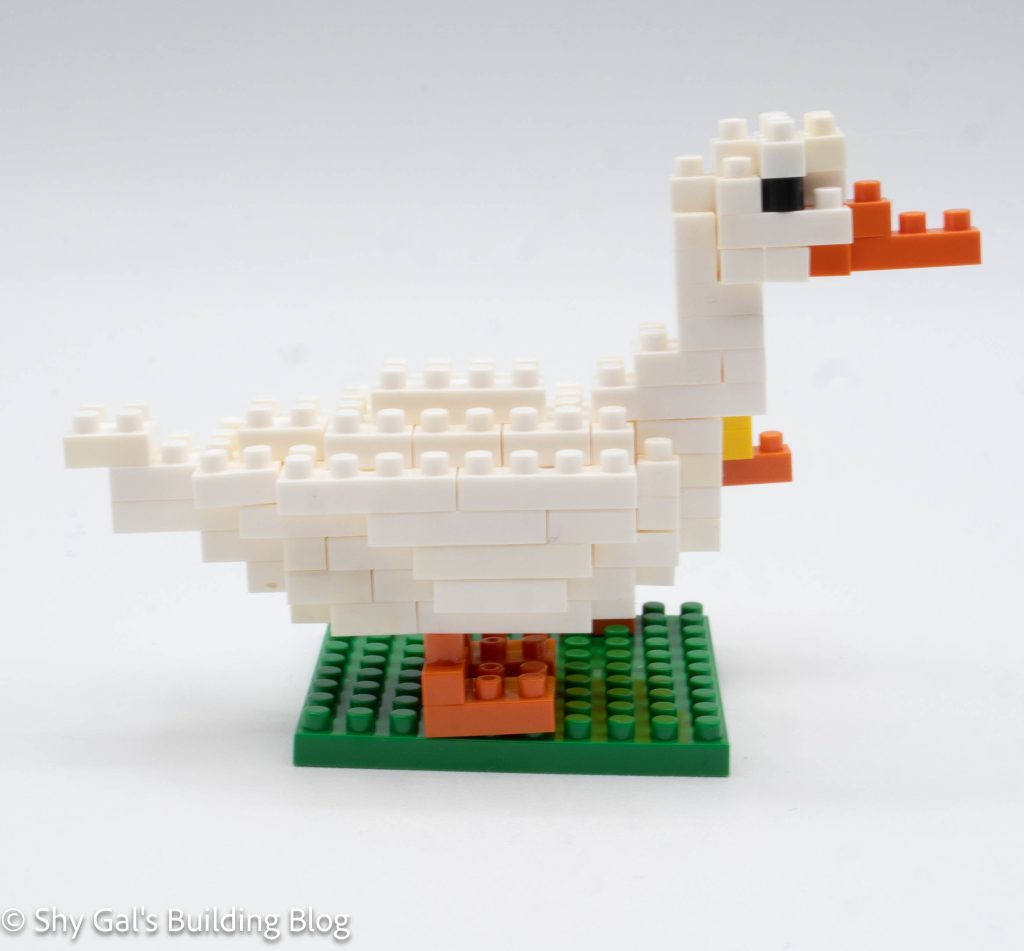
The baby duck is very straightforward. There are a couple points where the direction of the brick matters or where the brick isn’t centered.
The adult duck is all white. It began as a layer of white bricks that I laid out on my nanoblock pad. The body of the duck went up in layers, creating the body of the duck.
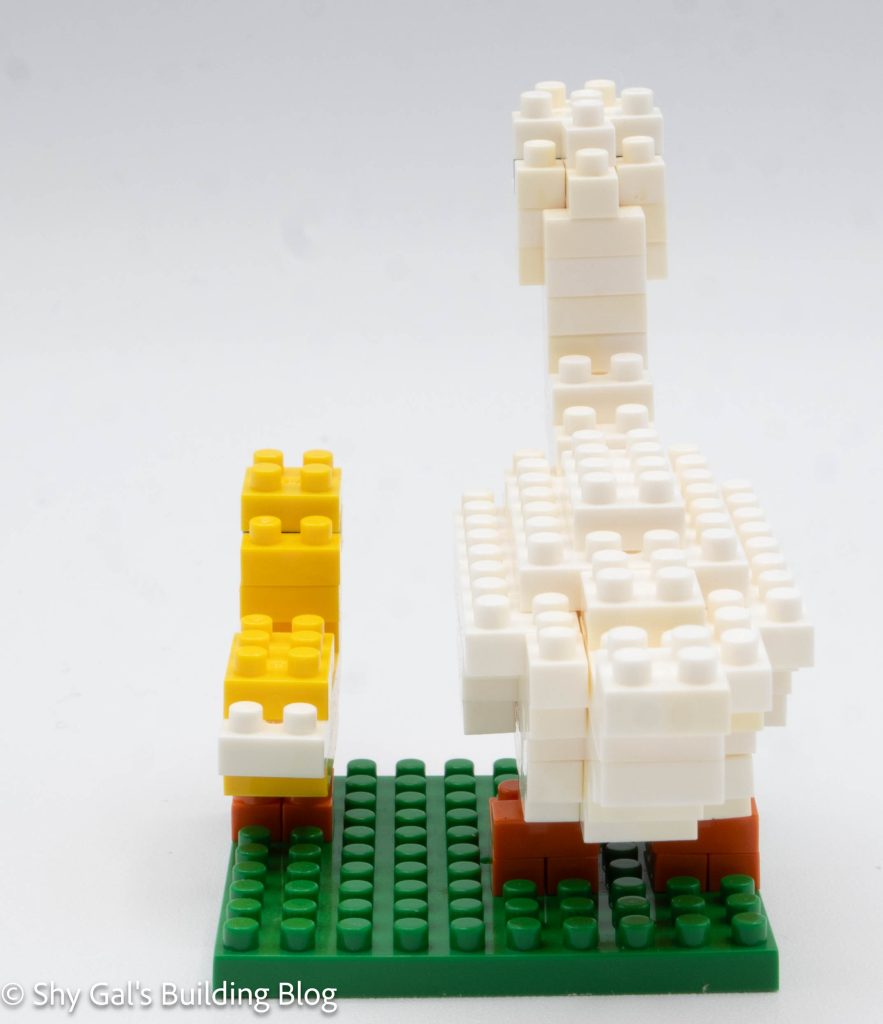
The trickiest part of the duck is creating the head. I think the directions aren’t very clear in part because the instructions are cramped. The beak is the most confusing because of how the bricks line up.
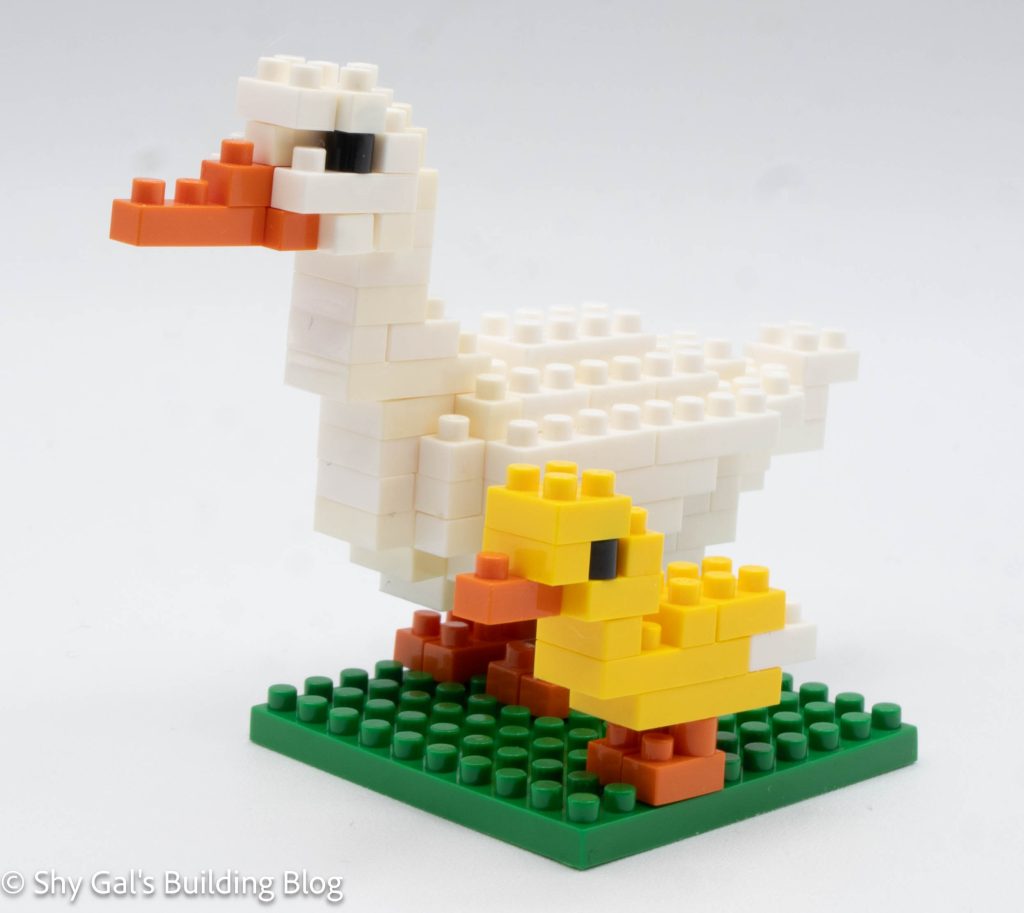
Things I liked:
- I really like that there is a mom and baby duck in the finished build and that both ducks fit on the plate
